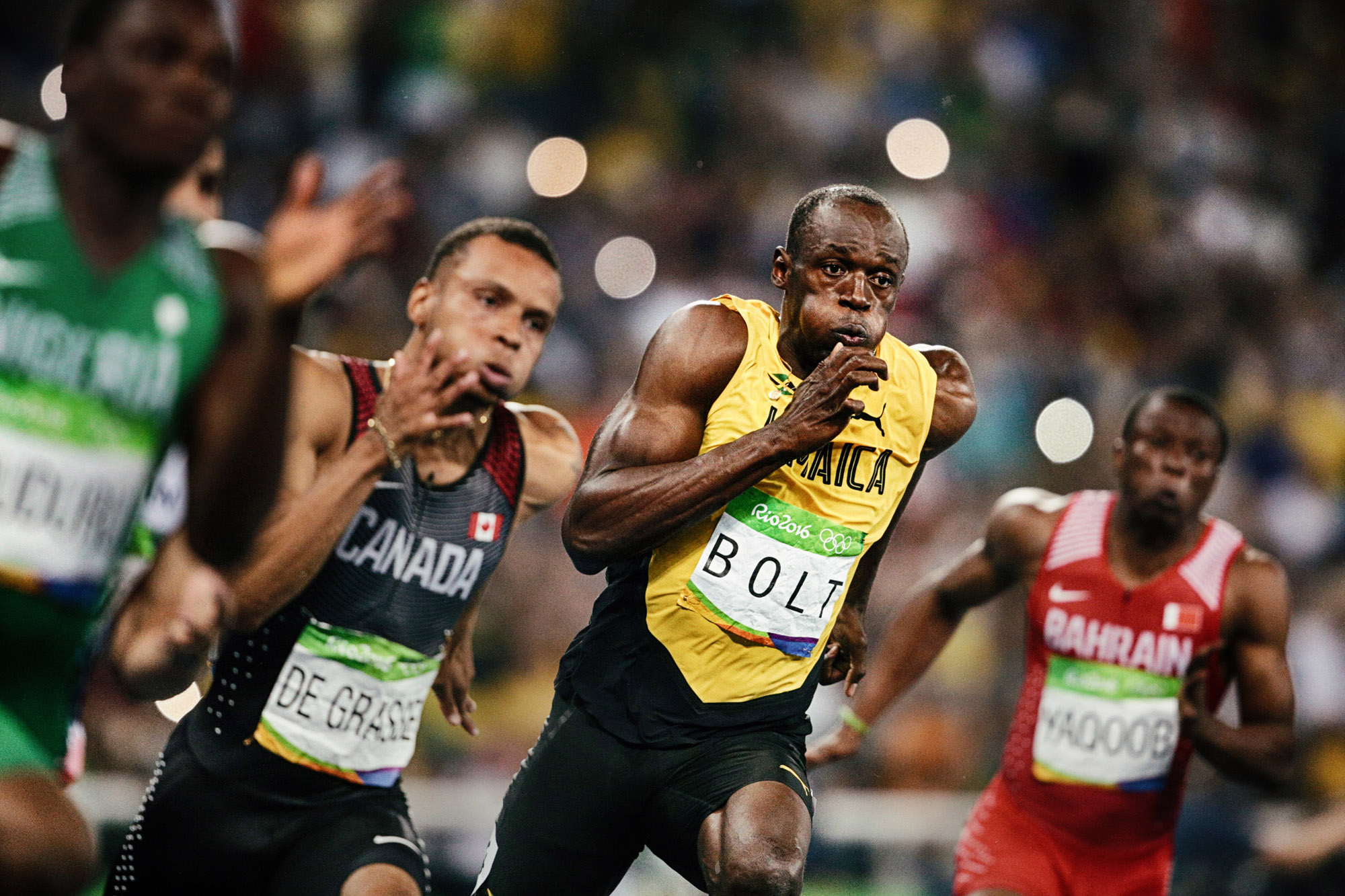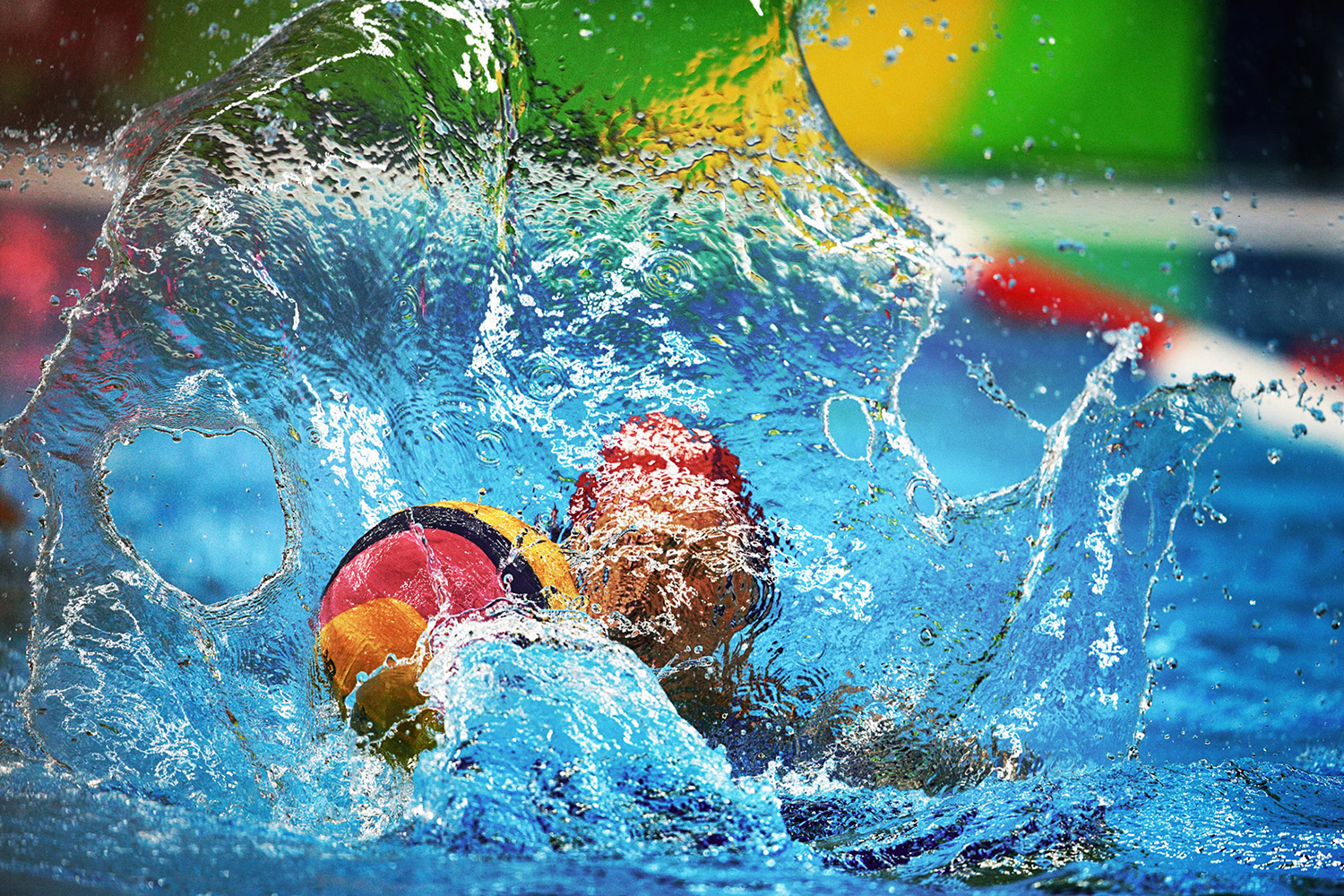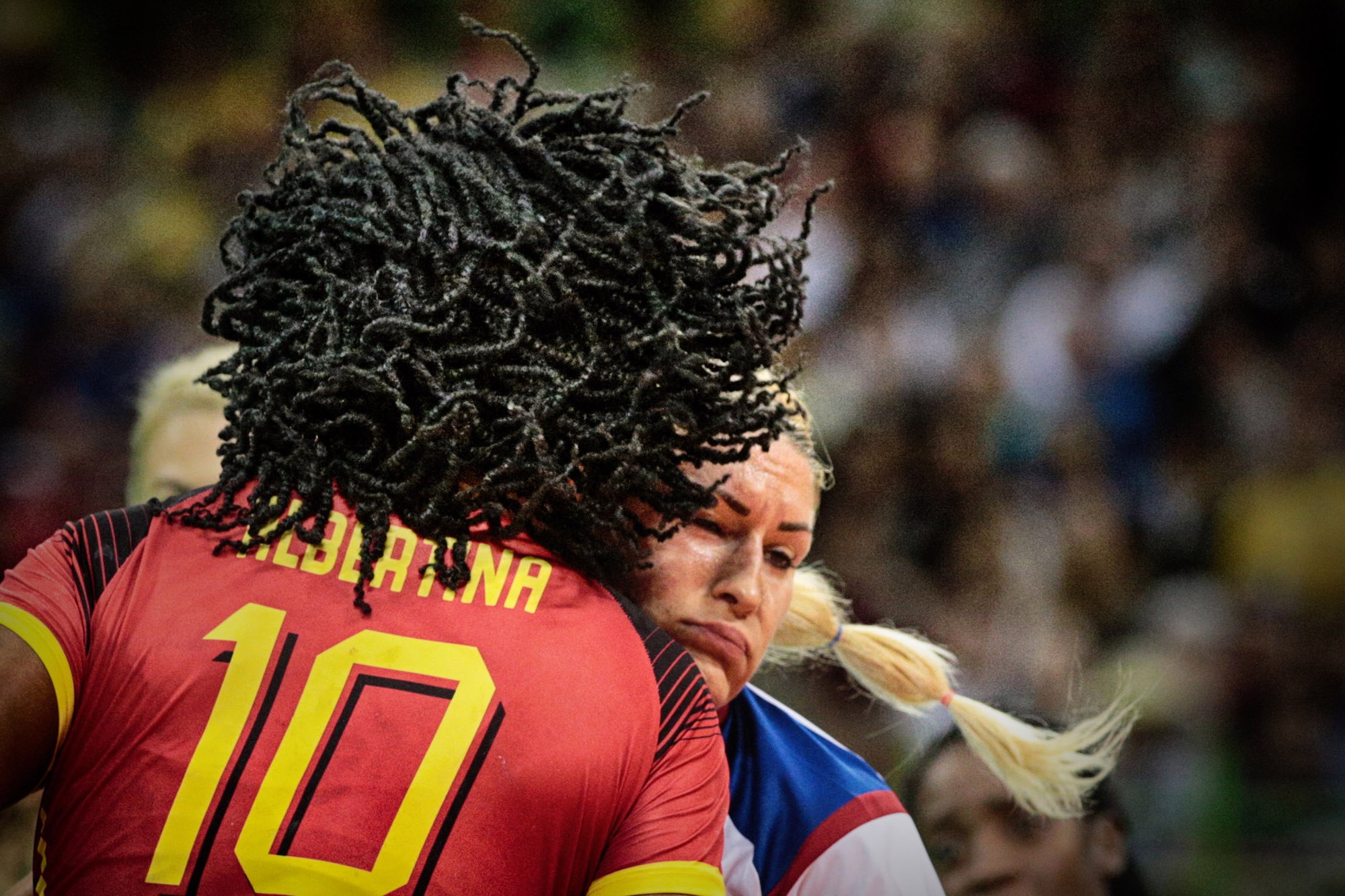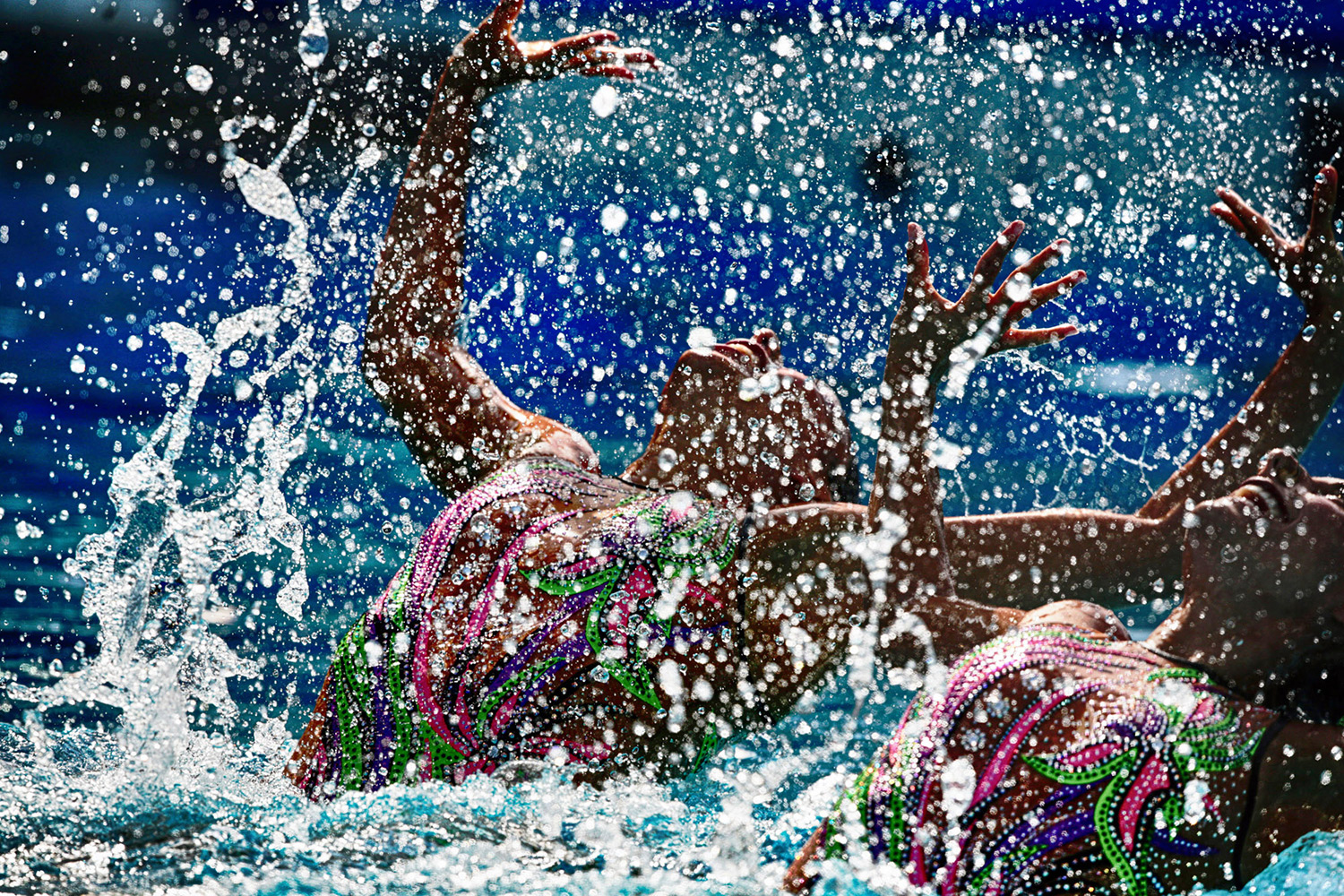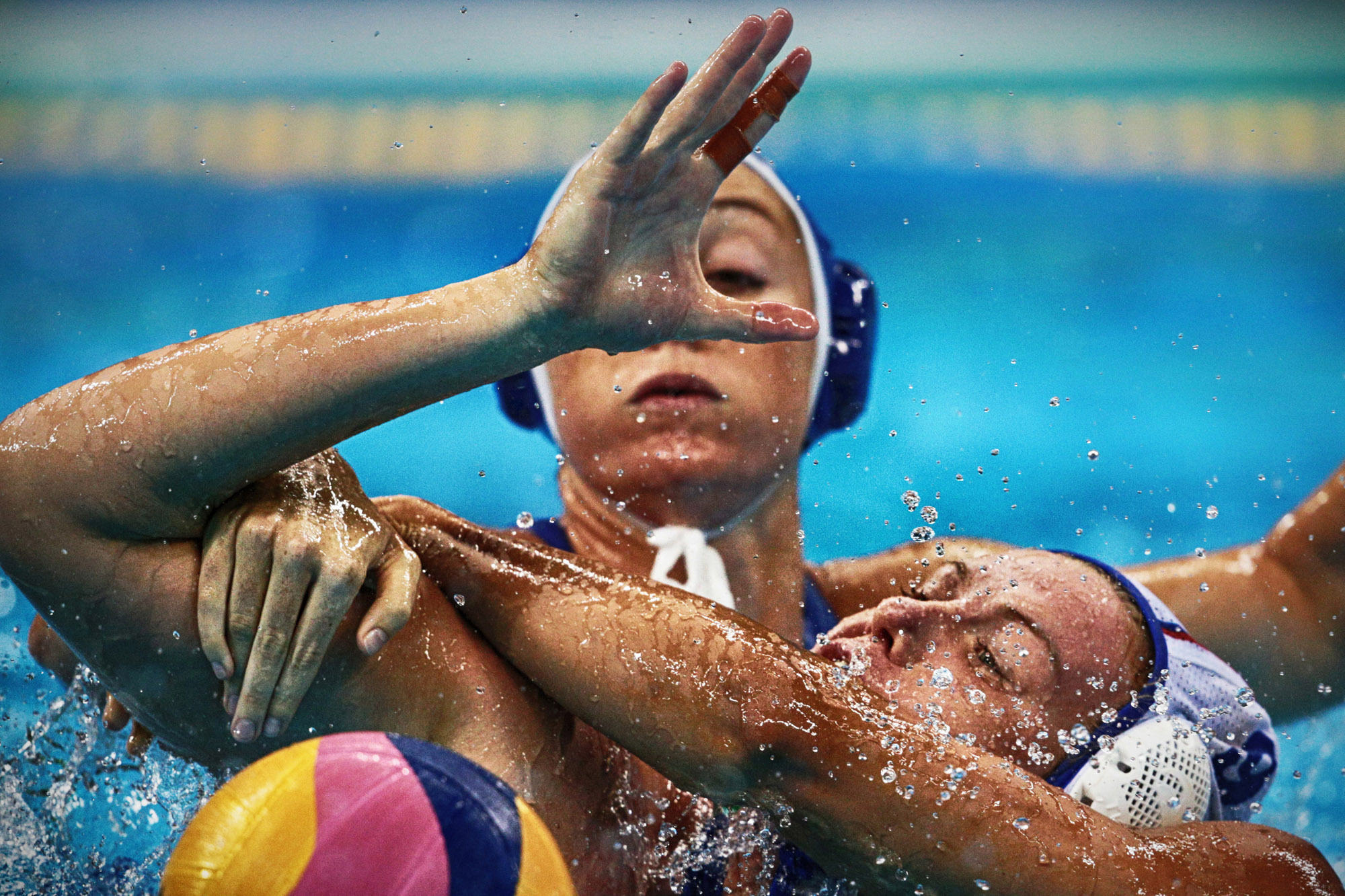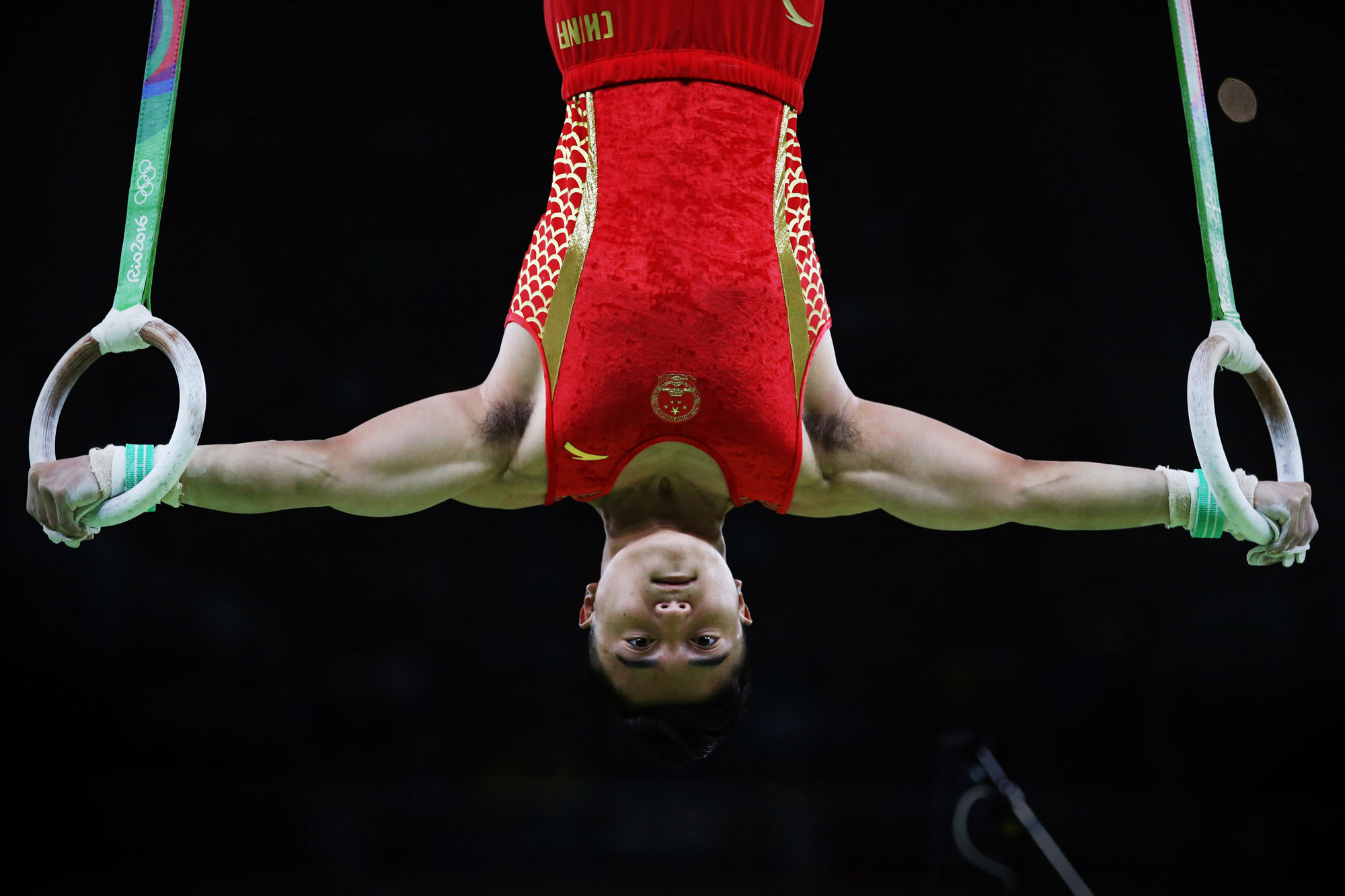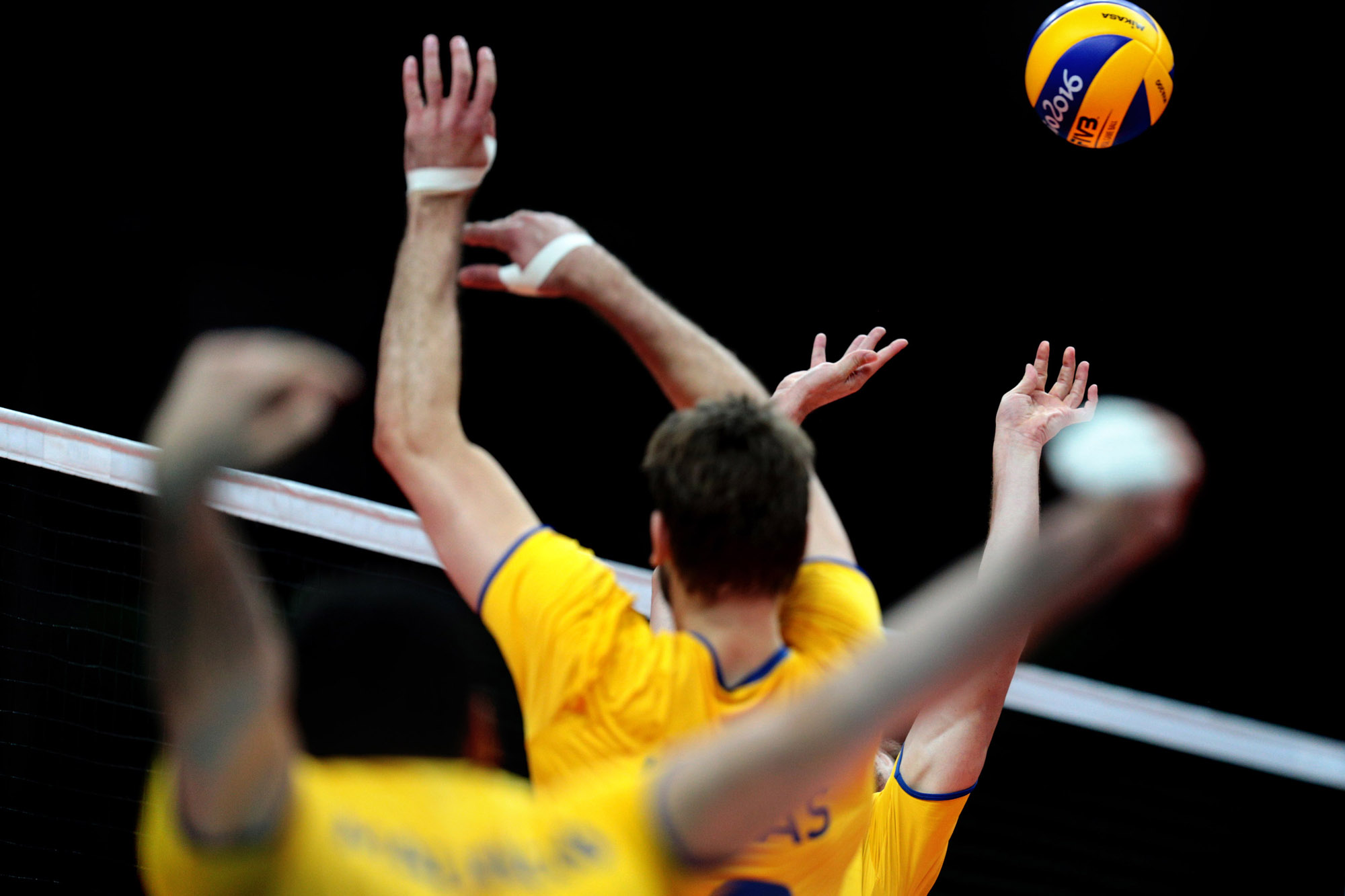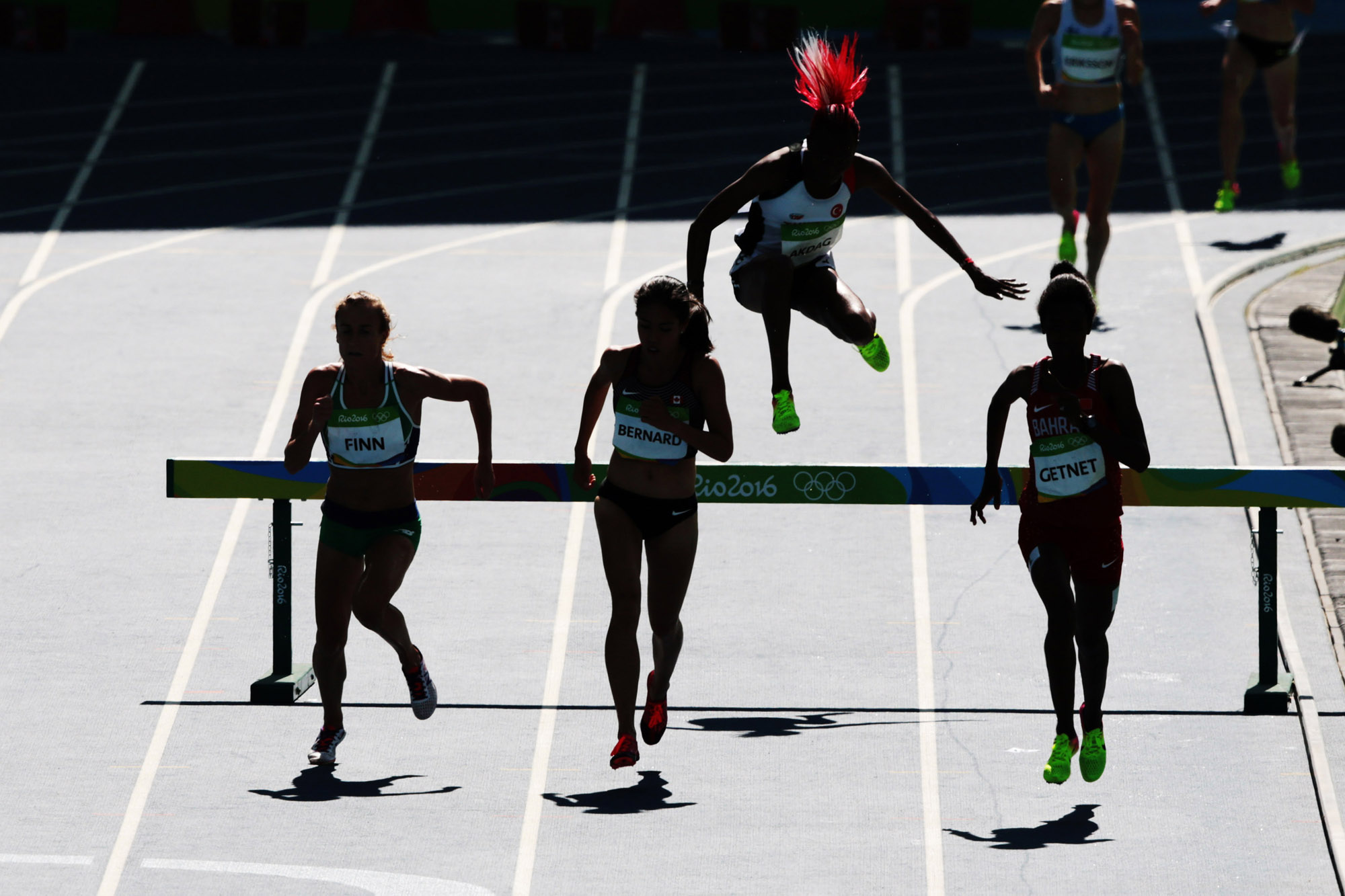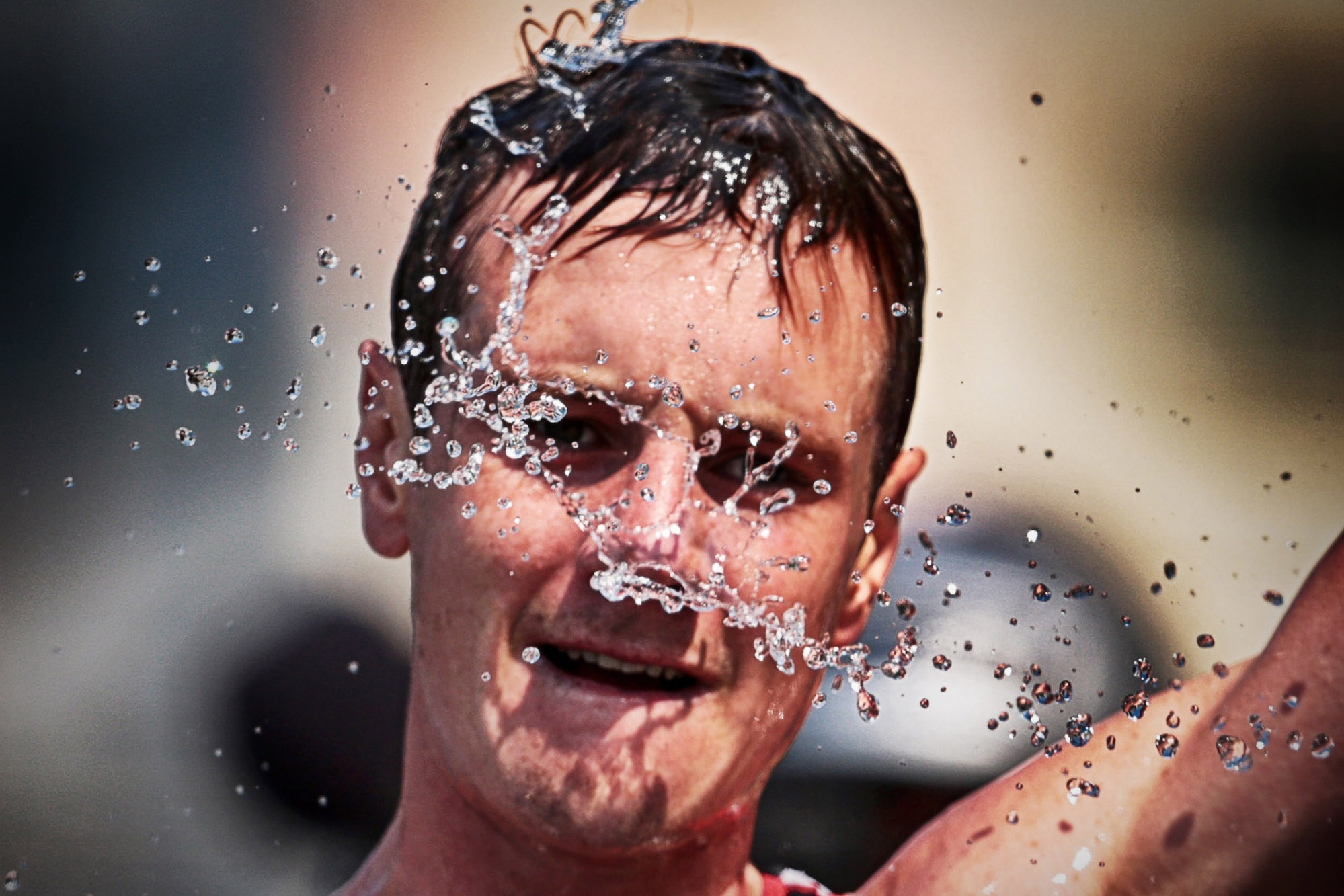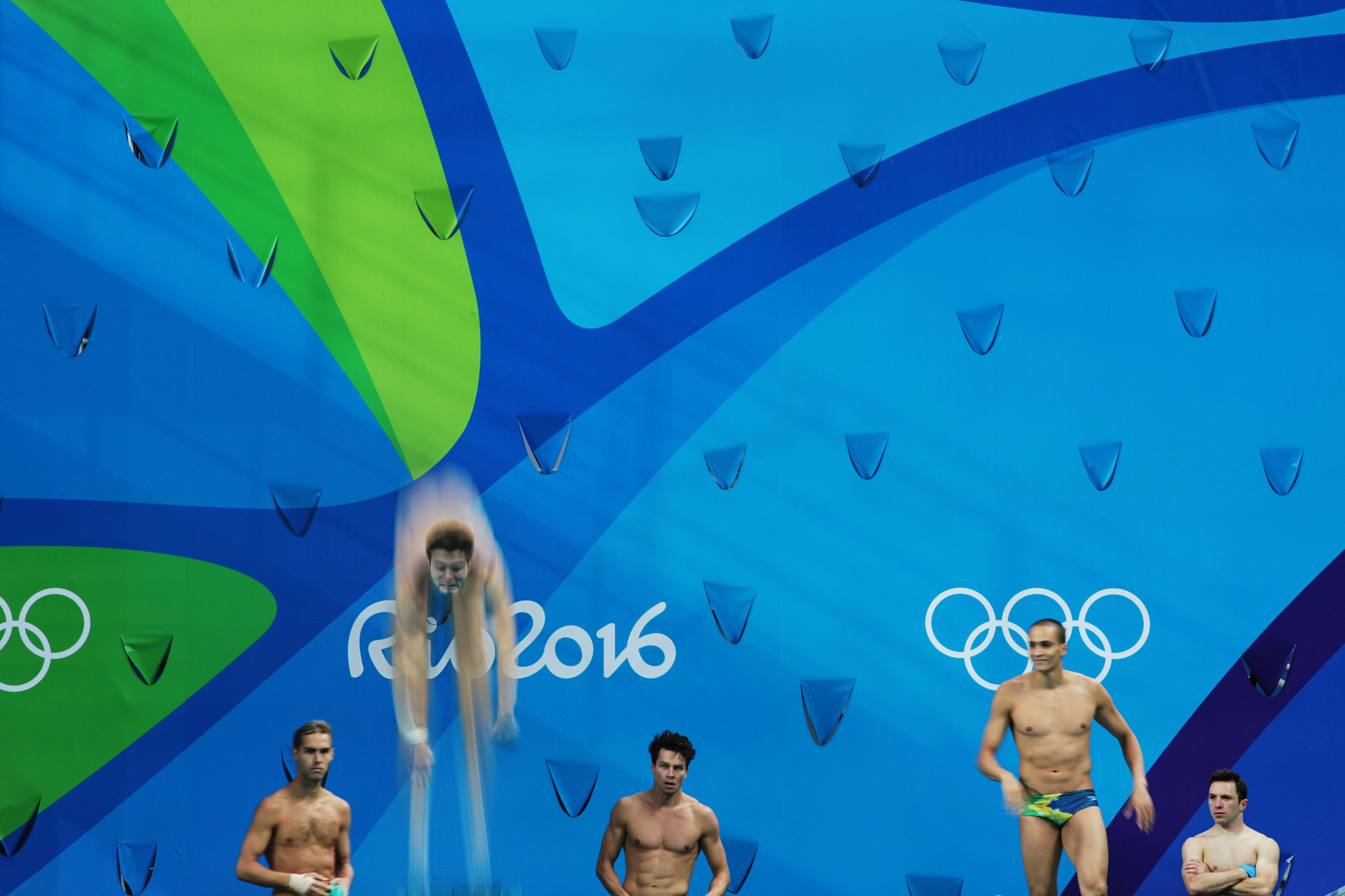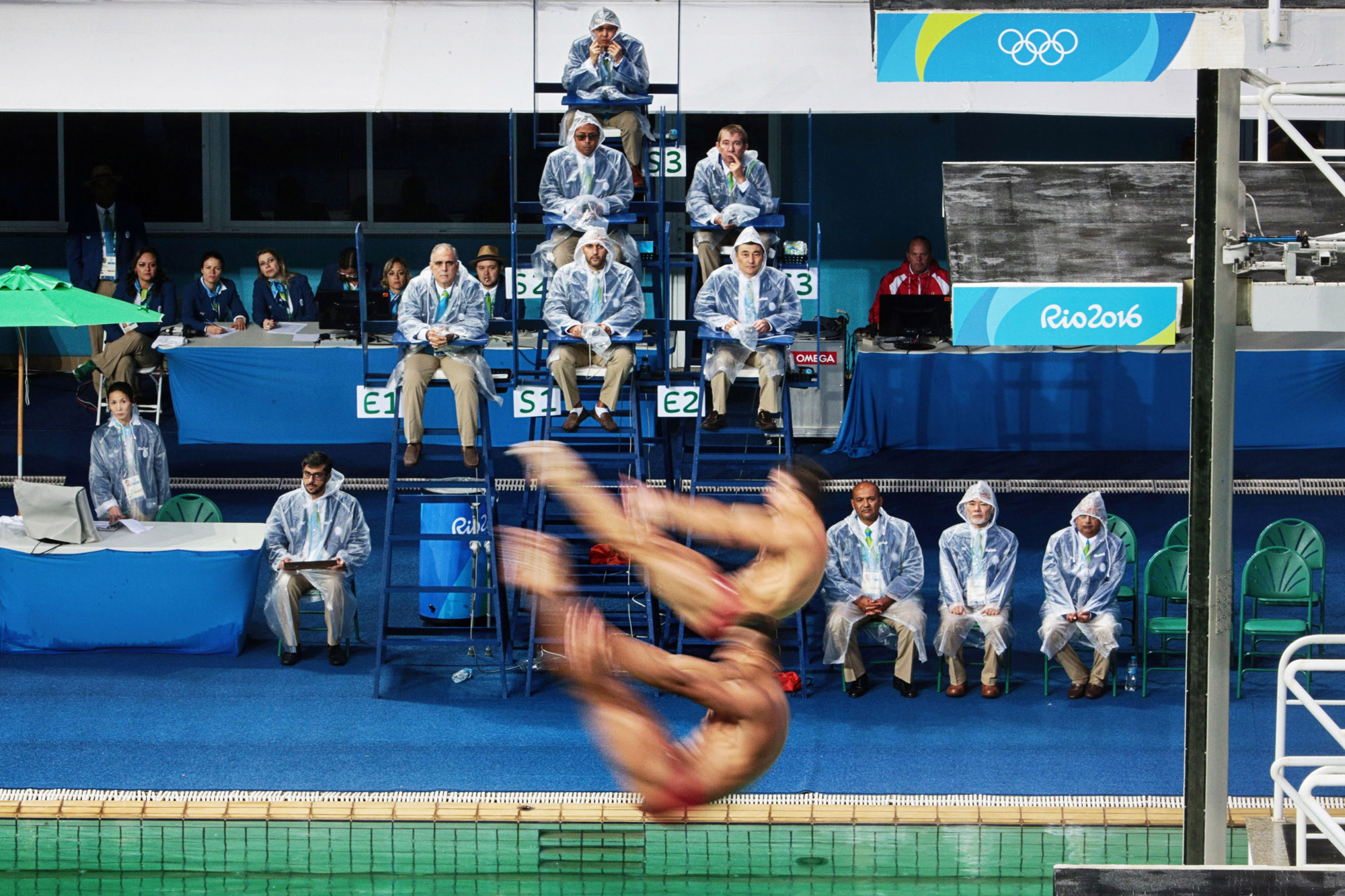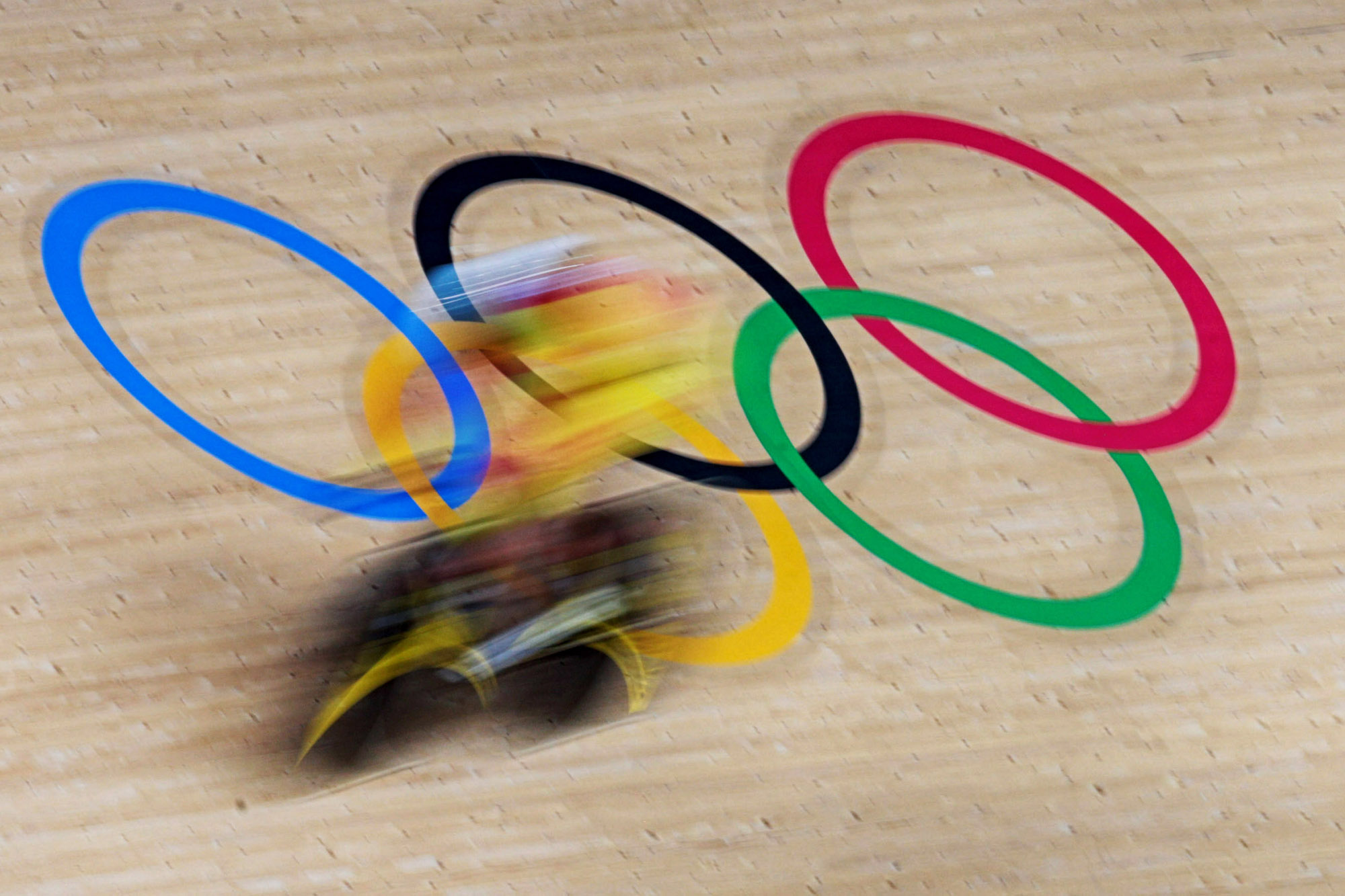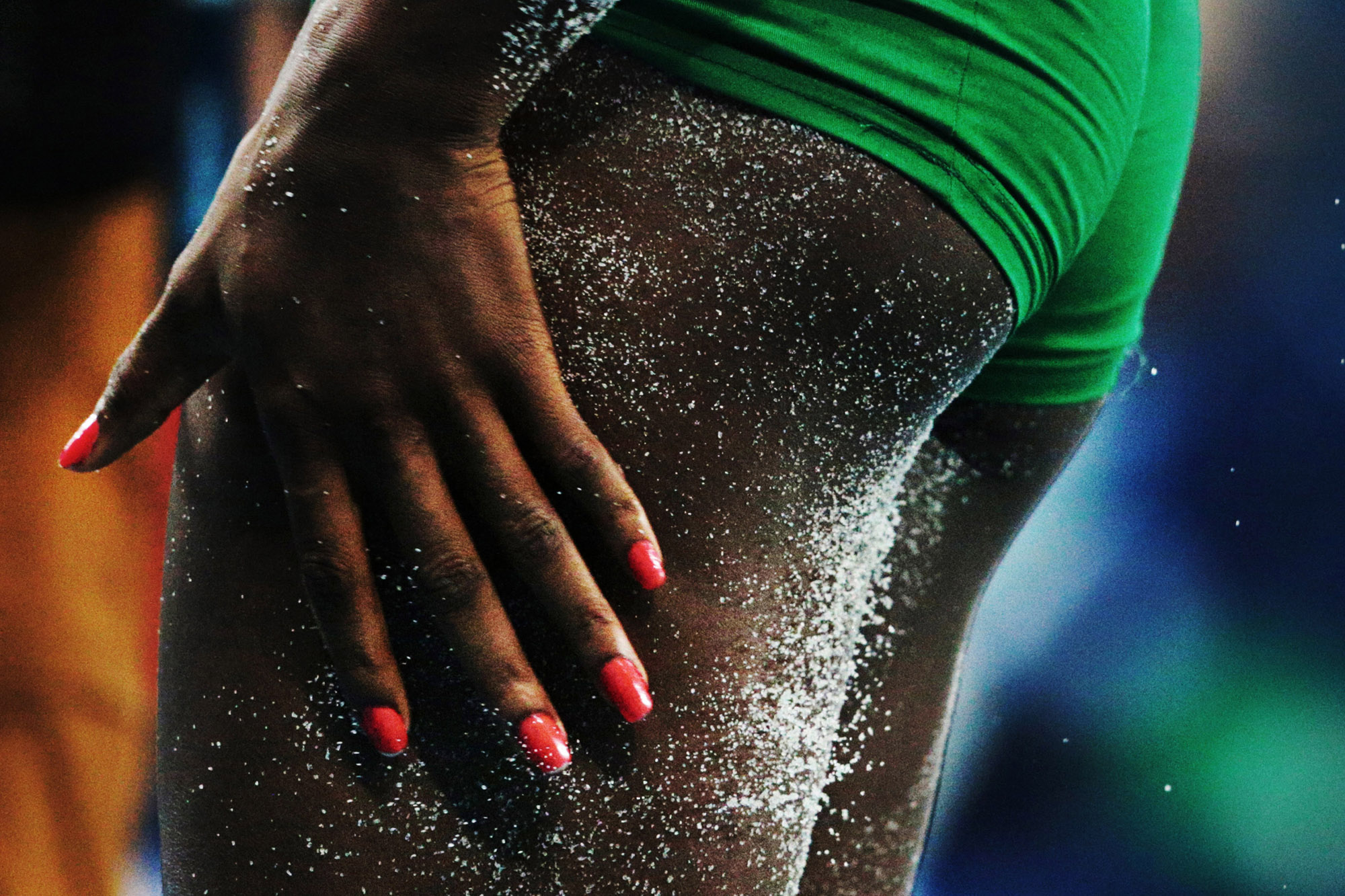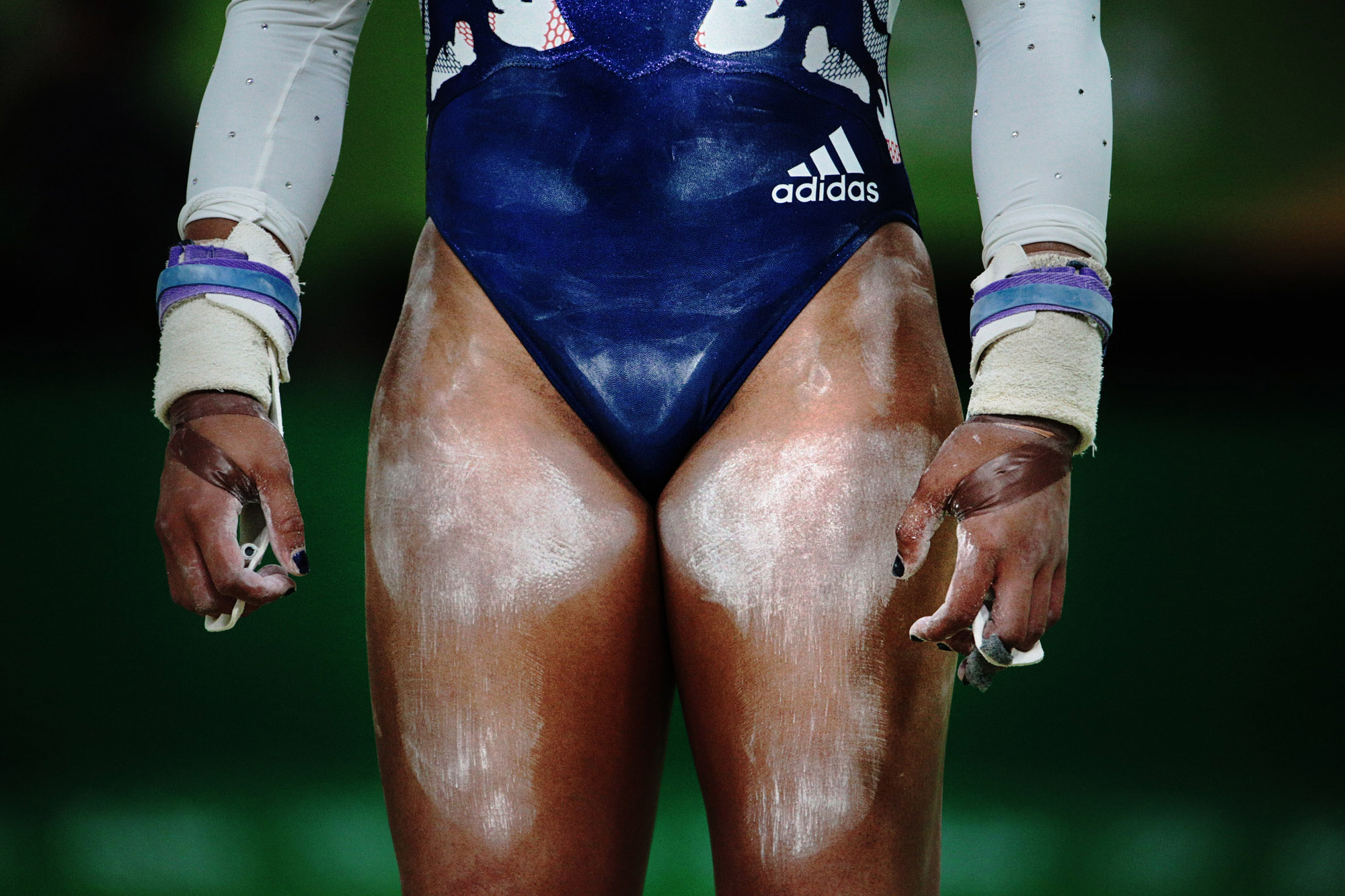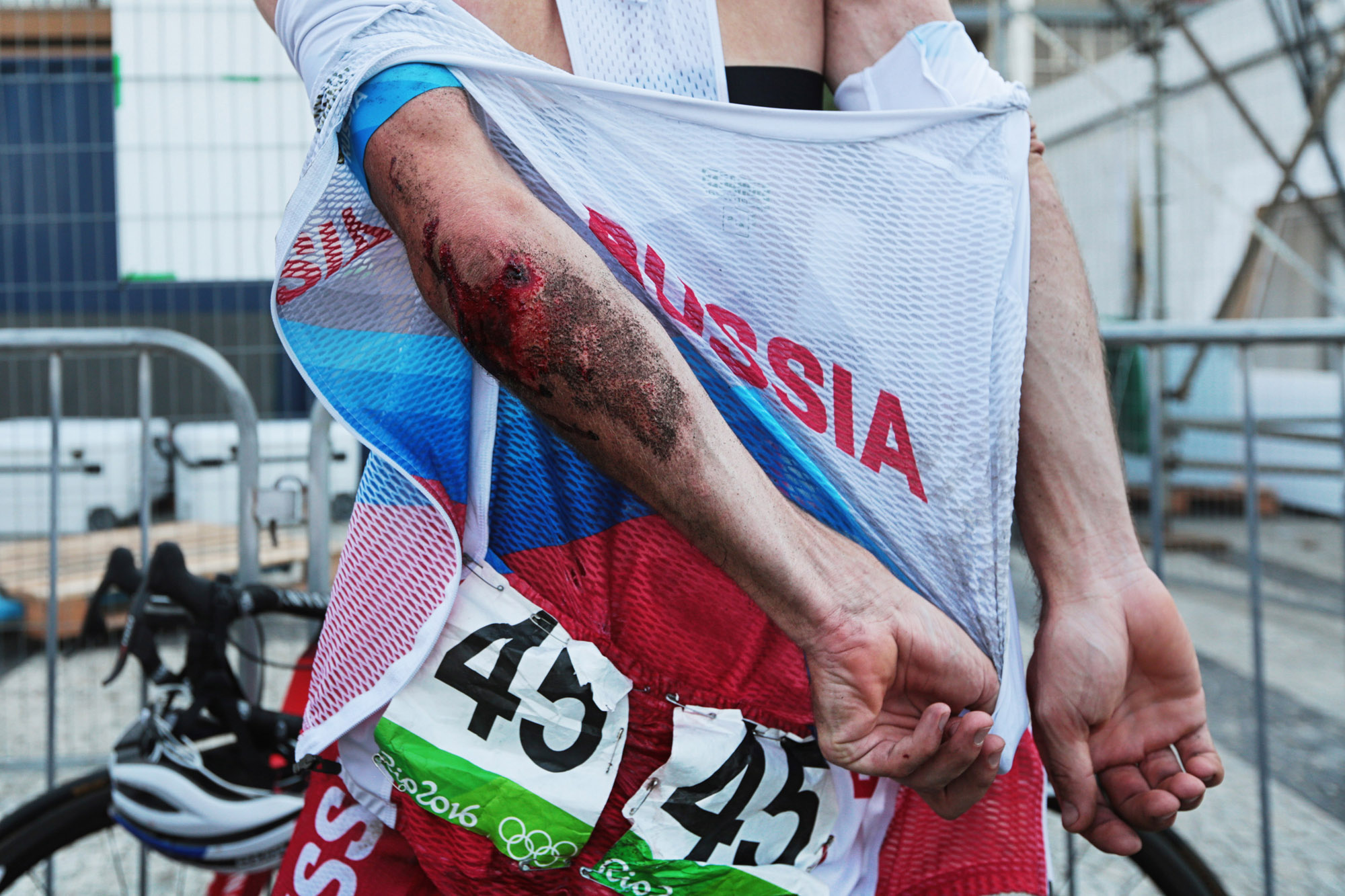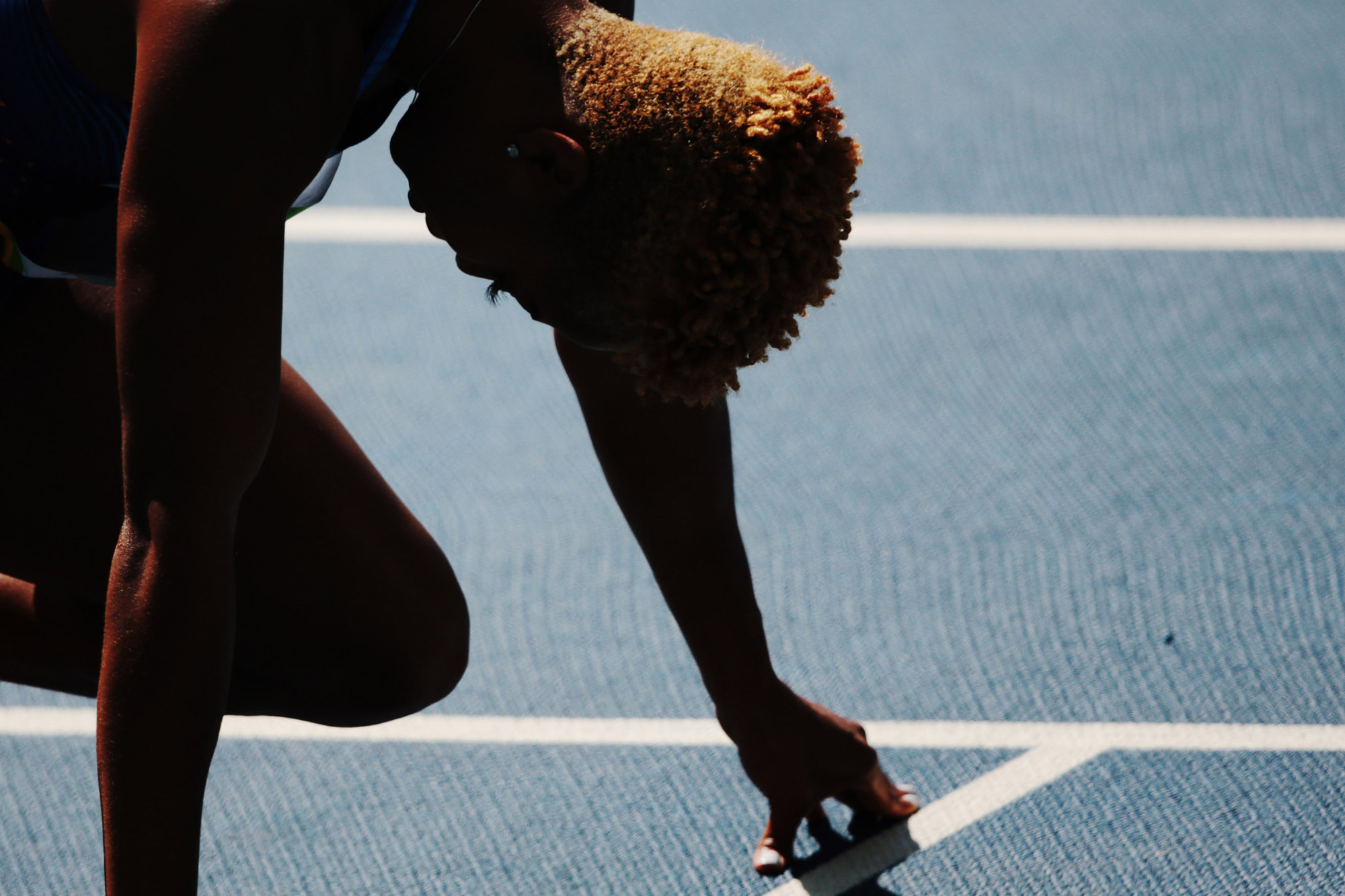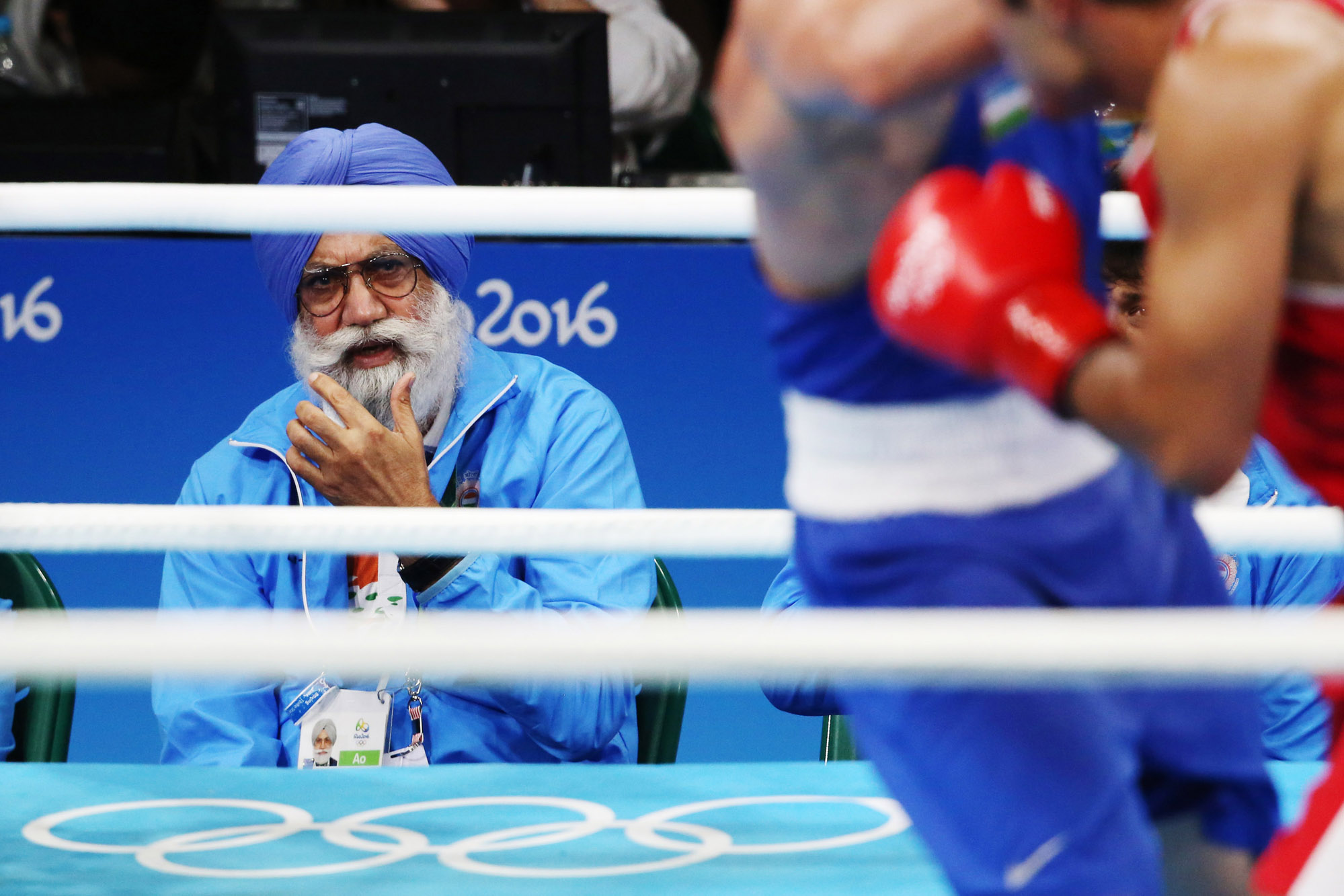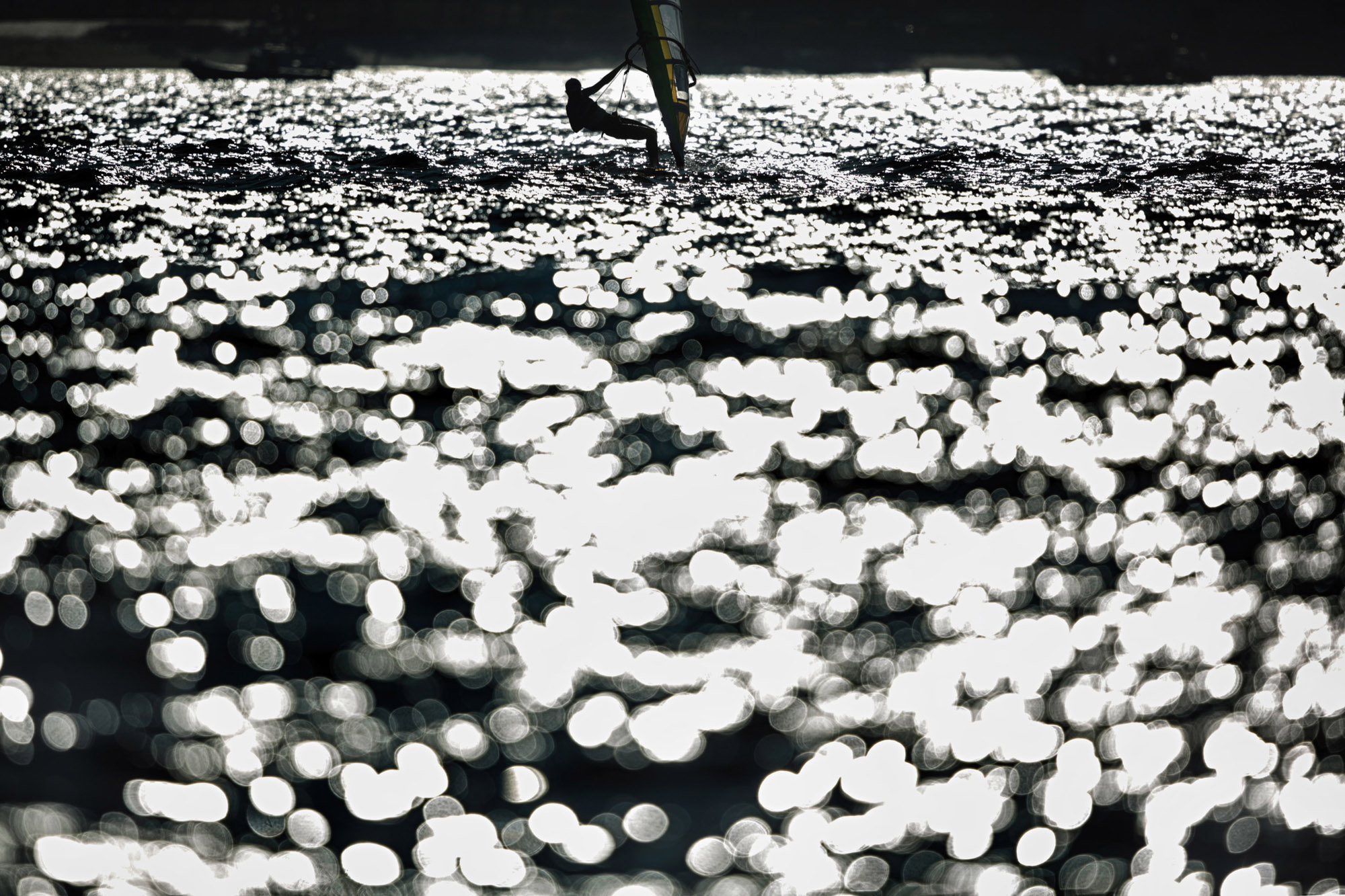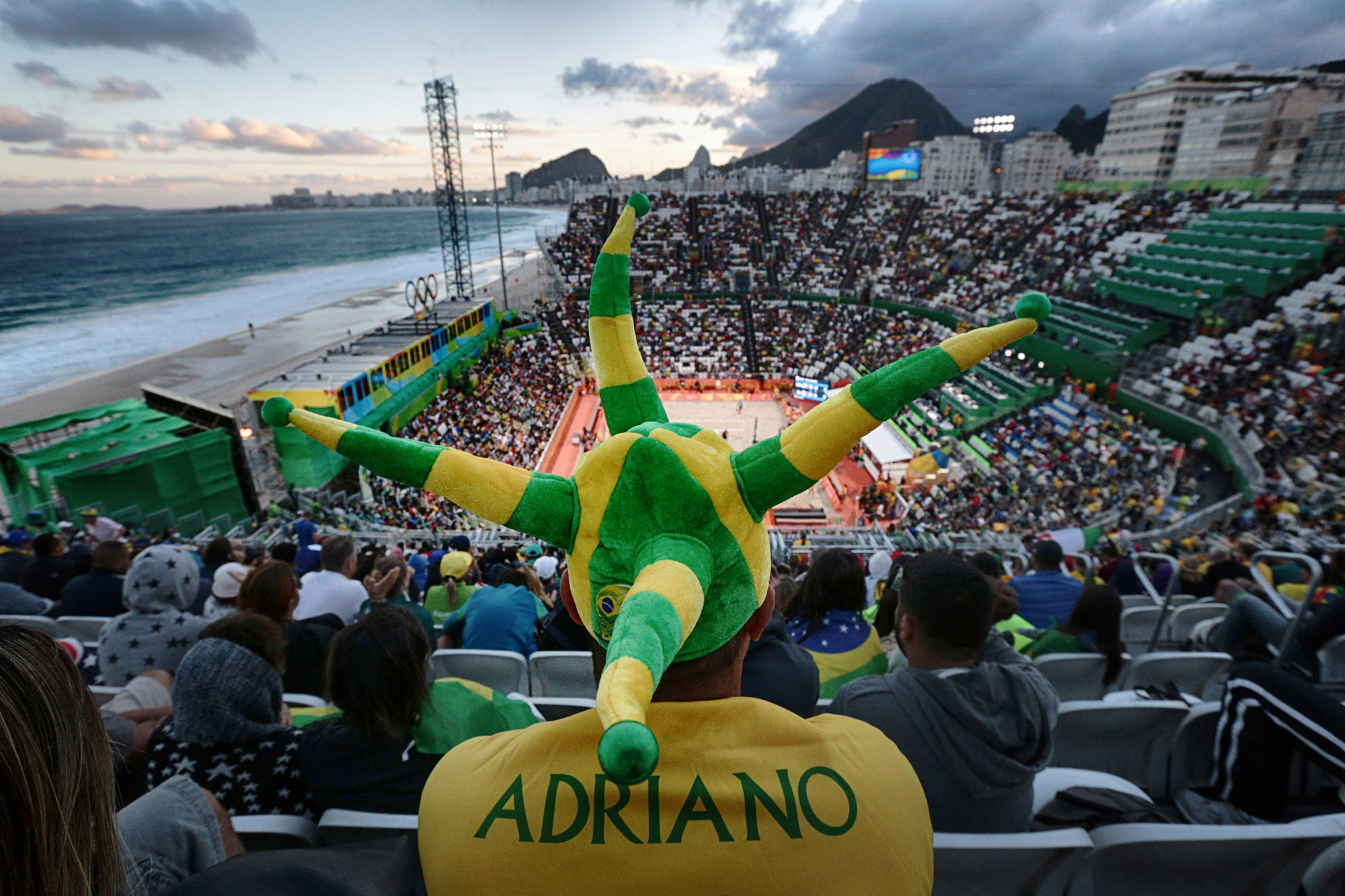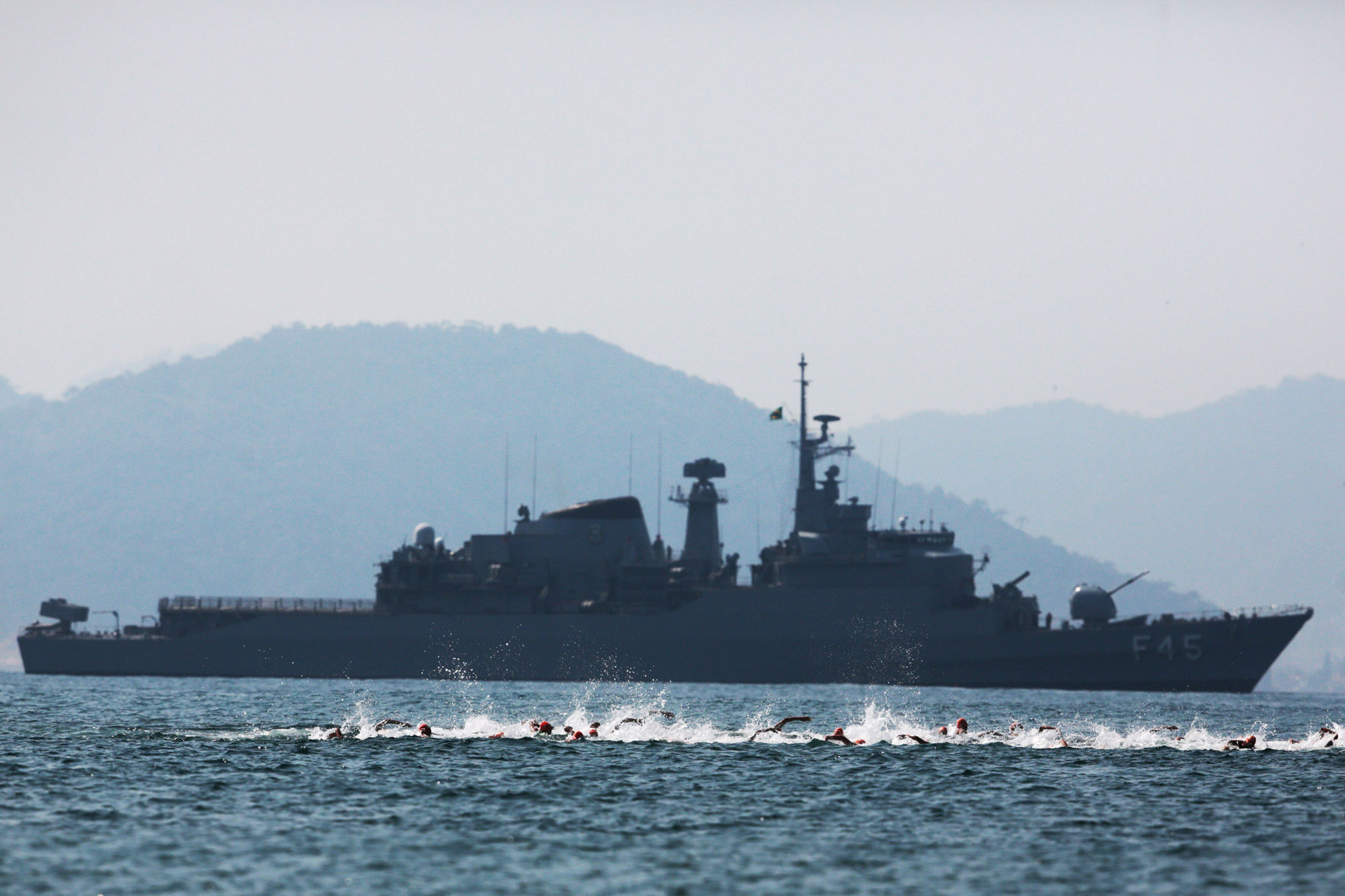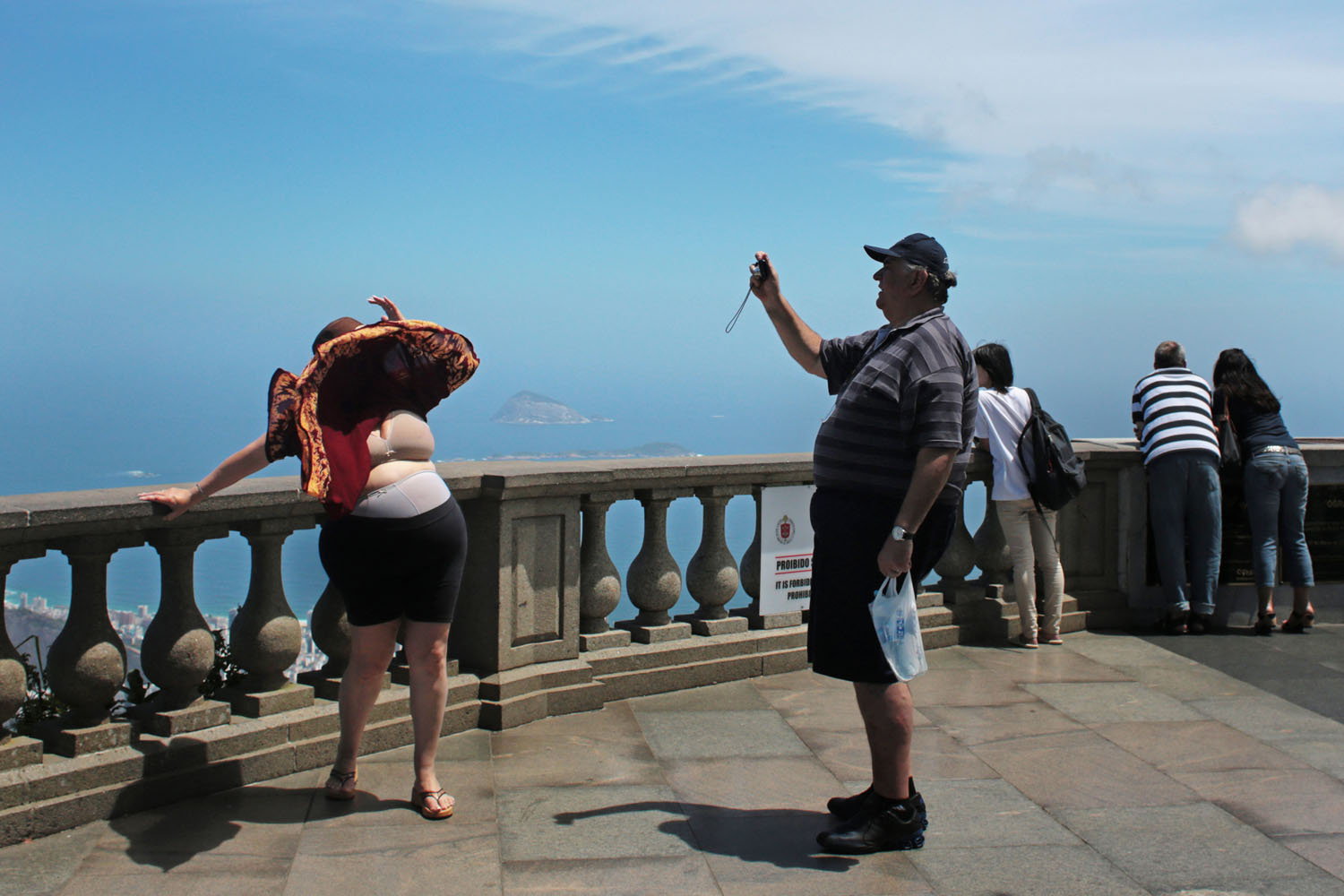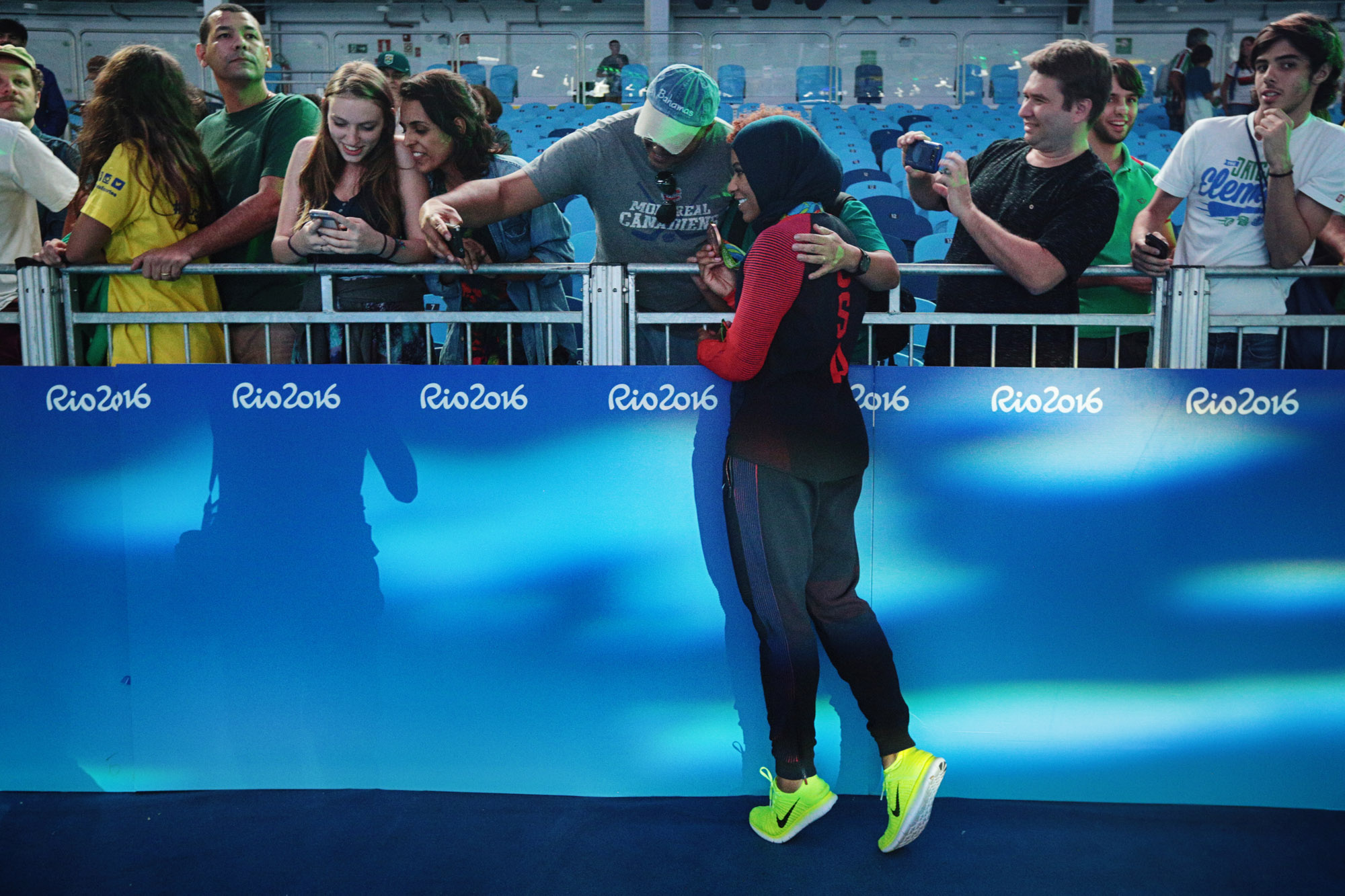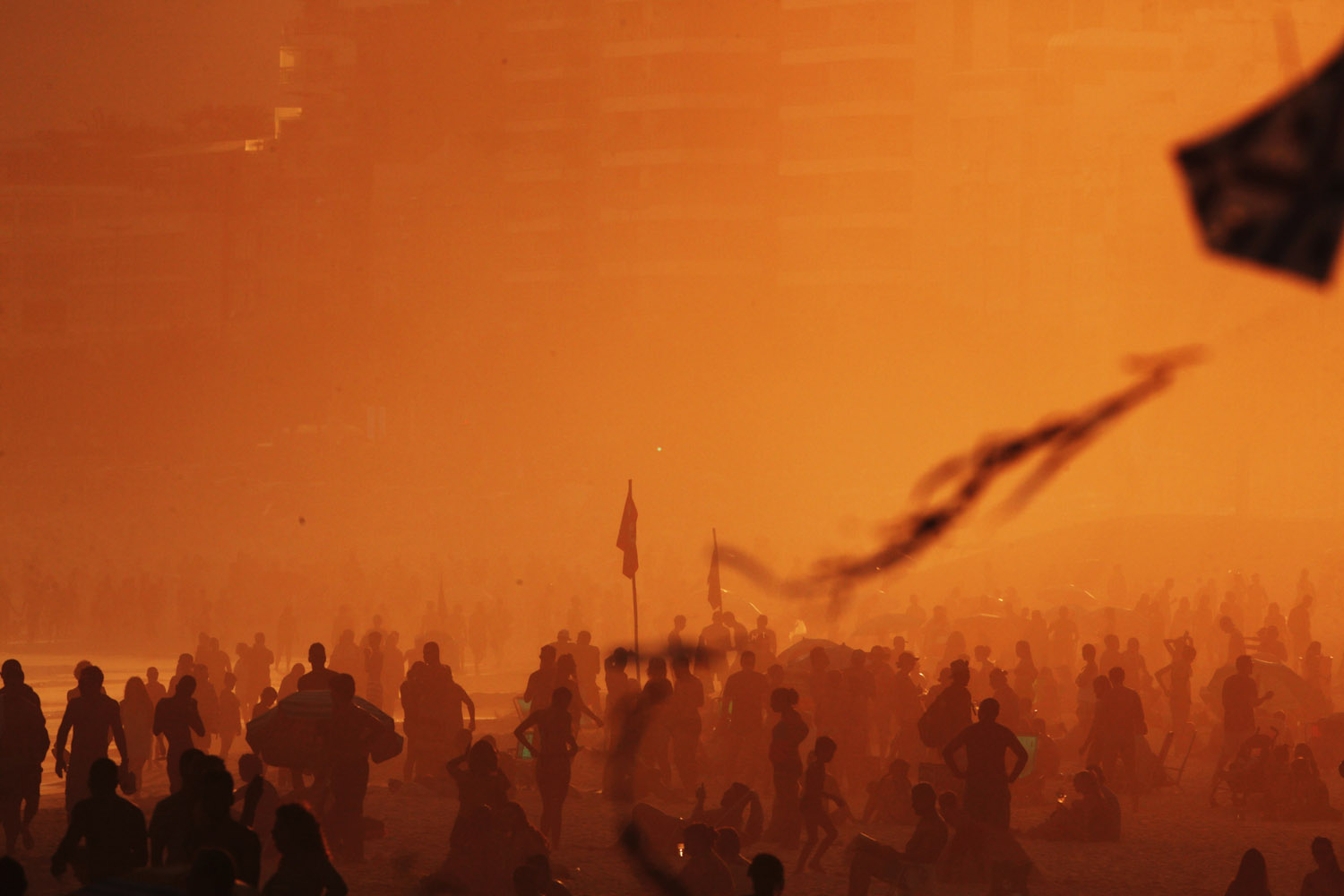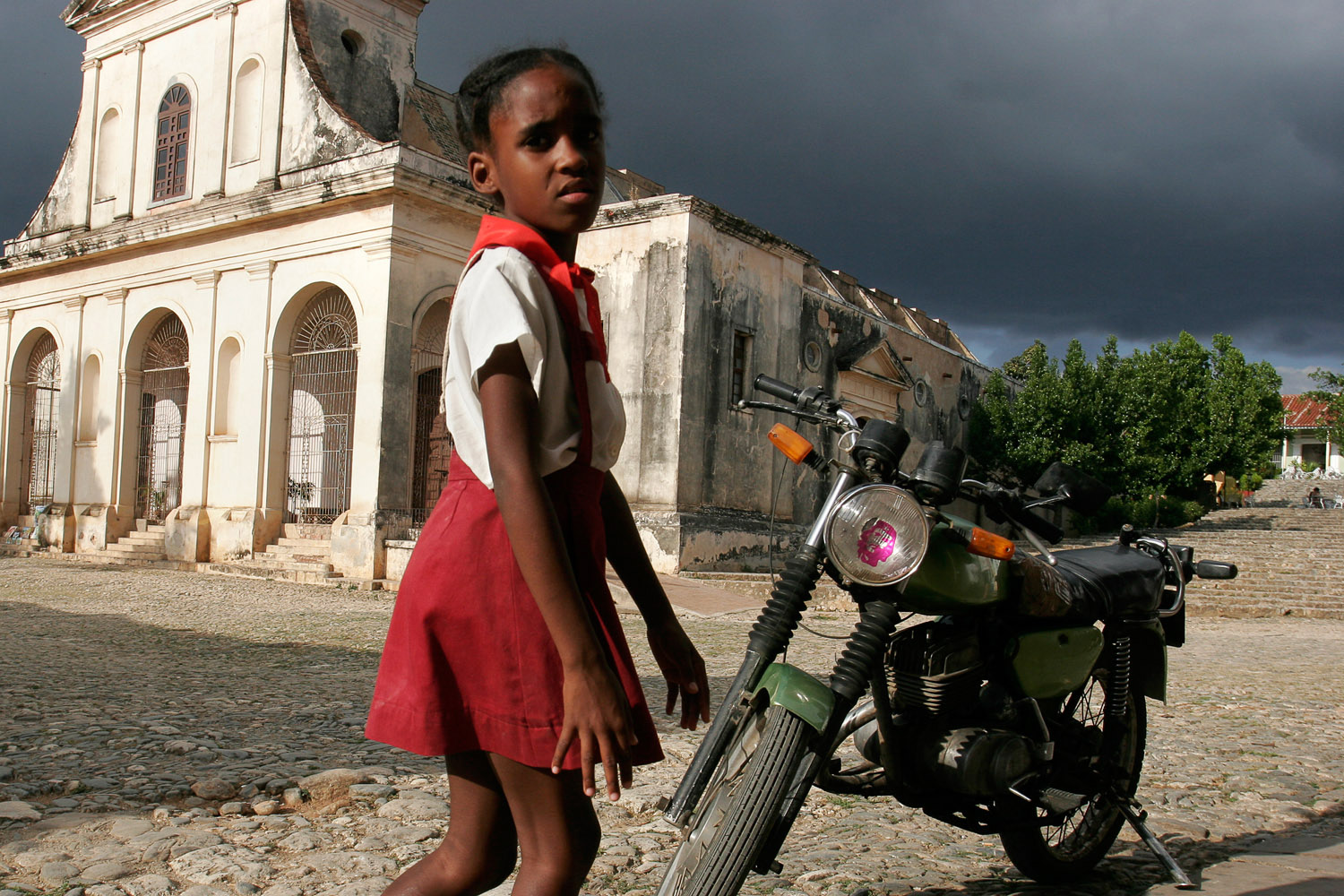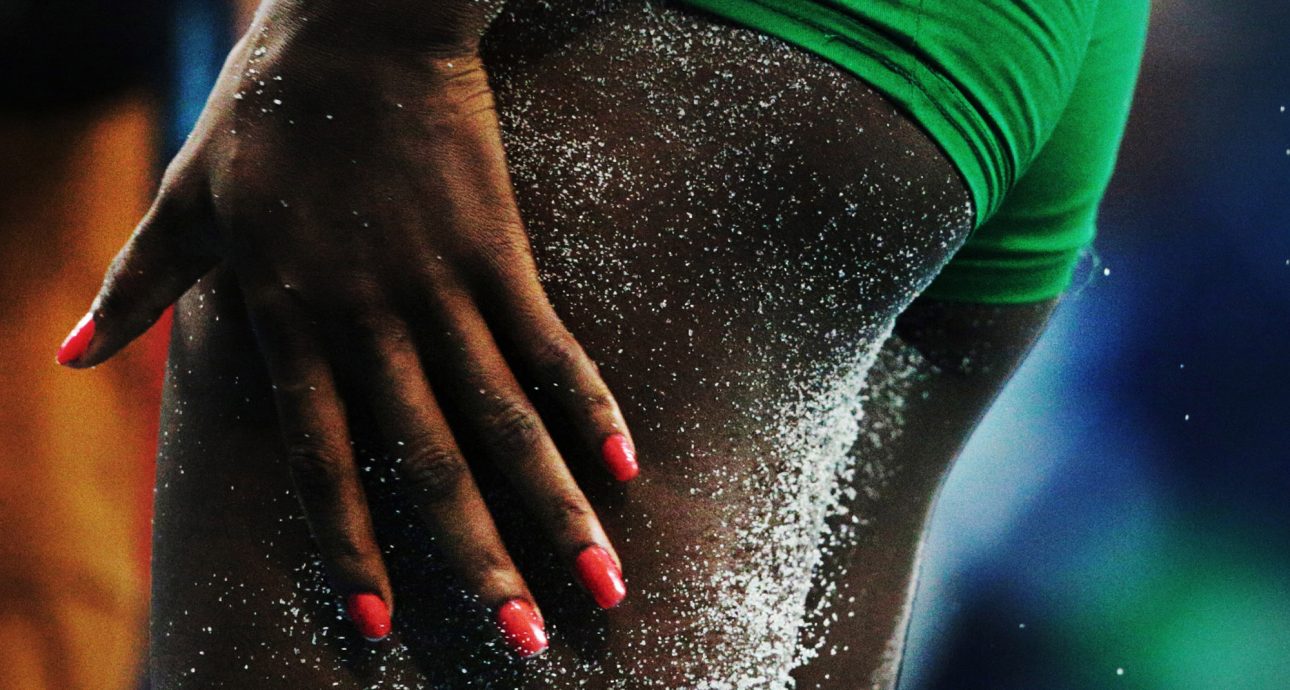
Stand Back and Think: How the Best Sports Photographs Are Taken

Born and raised in Moscow, spent the past five years in South America. Worked as a sports photographer and photojournalist in the Russian media, currently freelances, works with Bigpicture.ru.
95% of work for a sports photographer is the speed of reaction to a game moment. Modern ‘top’ DSLR cameras with hypersensitive autofocus that allow you to shoot at up to 12 frames per second make the job of a photographer much easier, minimizing the number of bad shots. But such performance may be also bad for a reporter, who stops thinking and looking for new shots, knowing that the camera will do most of the work for them. If you come to a competition that features Usain Bolt with four cameras, a remote and a full set of lenses, it does not guarantee you a great shot. You might end up fussing with your own monopode when changing the camera and missing the moment when Bolt steps over you on the way to the spectator stands.
I used only one camera during the Olympics, an old Canon 5D Mark III, and it was more than enough: I did not need a load of ‘traditional’ shots chased by agency photographers. Of course, there is nothing like a perfectly composed sports moment, but the speed of my camera did not allow me to compete with the serious guys. I tried to take 10 to 15 regular photographs, and then just pay attention to the details.
There is one more reason not to try to compete with pool photographers (from Getty, Reuters, AP and AFP): they have better spots. They are close to the athletes and have the opportunity to use the entire variety of lenses: from wide-angle ‘fish eye’ to portrait lens. Their positions are the most well-thought out: in a special pit, on a hill, in the middle or on the edge of a playing field. During the awards ceremony, there are chairs for them in the middle of a pedestal. In general, they work like kings. But in return, they have no right to make a mistake. Most often they spend the entire competition in one spot.
What is there left to do for the ordinary photographers? Use their heads, look for unusual angles, stop being an attachment to the shutter release button.
The first two shots are the result of gender inequality in the photographers’ community. Awards ceremonies are the most hellish part of sports photography, especially if a world-class celebrity is awarded. It gets so crowded in the center that I prefer staying away from it and photographing the medalists from the side. This happened both during the football and volleyball competitions. The main protagonists there are the star of the Brazilian football team, Neymar, and the legendary Brazilian volleyball player, and heart of the team and crowd favorite, Serginho.
And here it is, the awards ceremony at Maracanã Stadium. I am not even trying to get closer and am just standing on the side. After the official part, Neymar heads in my direction, runs to the stands and cries in the arms of his family. Need I say that I could capture all the hugs? I had the most favorable spot right in the middle, without a single lens getting into my way from the sides. If not for the volunteer who was holding back a crowd of photographers behind me, I would have ended up in Neymar’s arms, too.
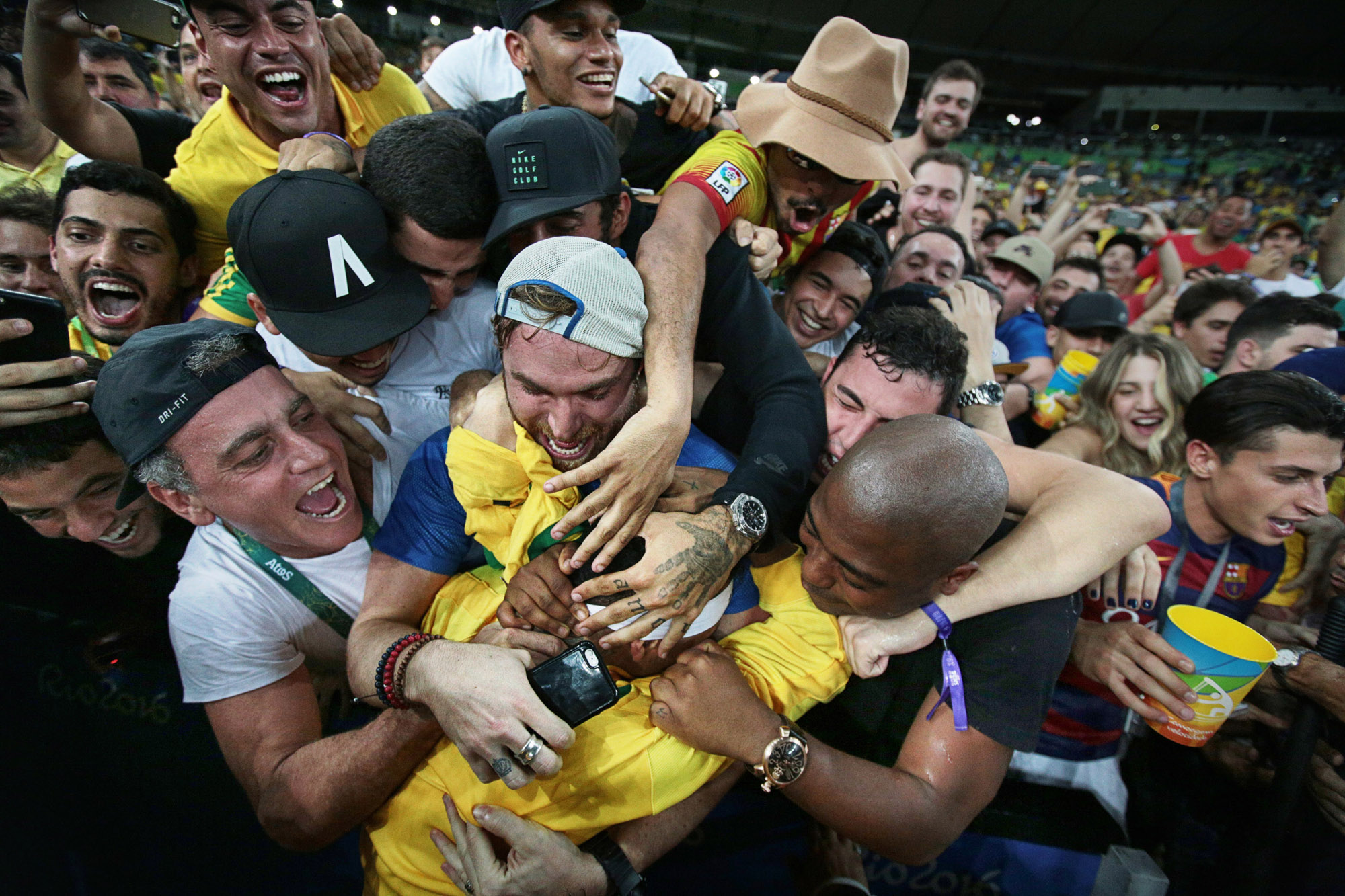
Or Maracanãzinho arena, the awards ceremony after the volleyball finals, I am standing on the side again, when a crying child appears behind my back, who turns out to be Serginho’s son. I place the boy in front of me and take a burst of shots of Serginho. It seems that he is looking right at me, although he is communicating with his son, of course.
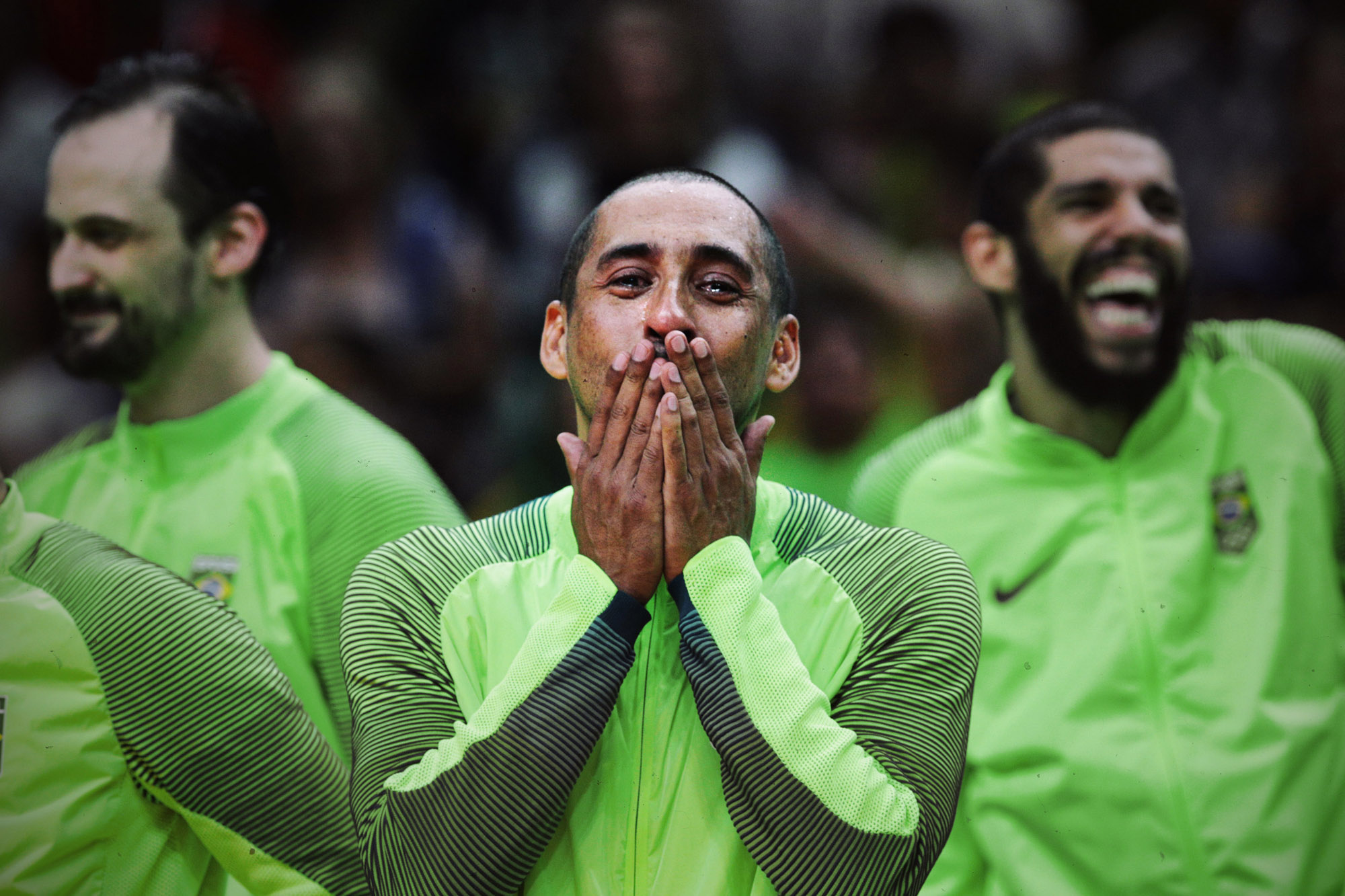
It’s good to have sports moments shot ‘clearly’, without any details in the background.
During the Olympics, you also need to capture the Olympic symbols as often as possible, and sometimes you’d get creative to find the desired five rings.
Women’s tennis, doubles. To take this photo, I had to reduce diaphragm to 14. This is how I got sharp background, and then I switched to manual focusing, as the net prevented me from focusing on the athlete.
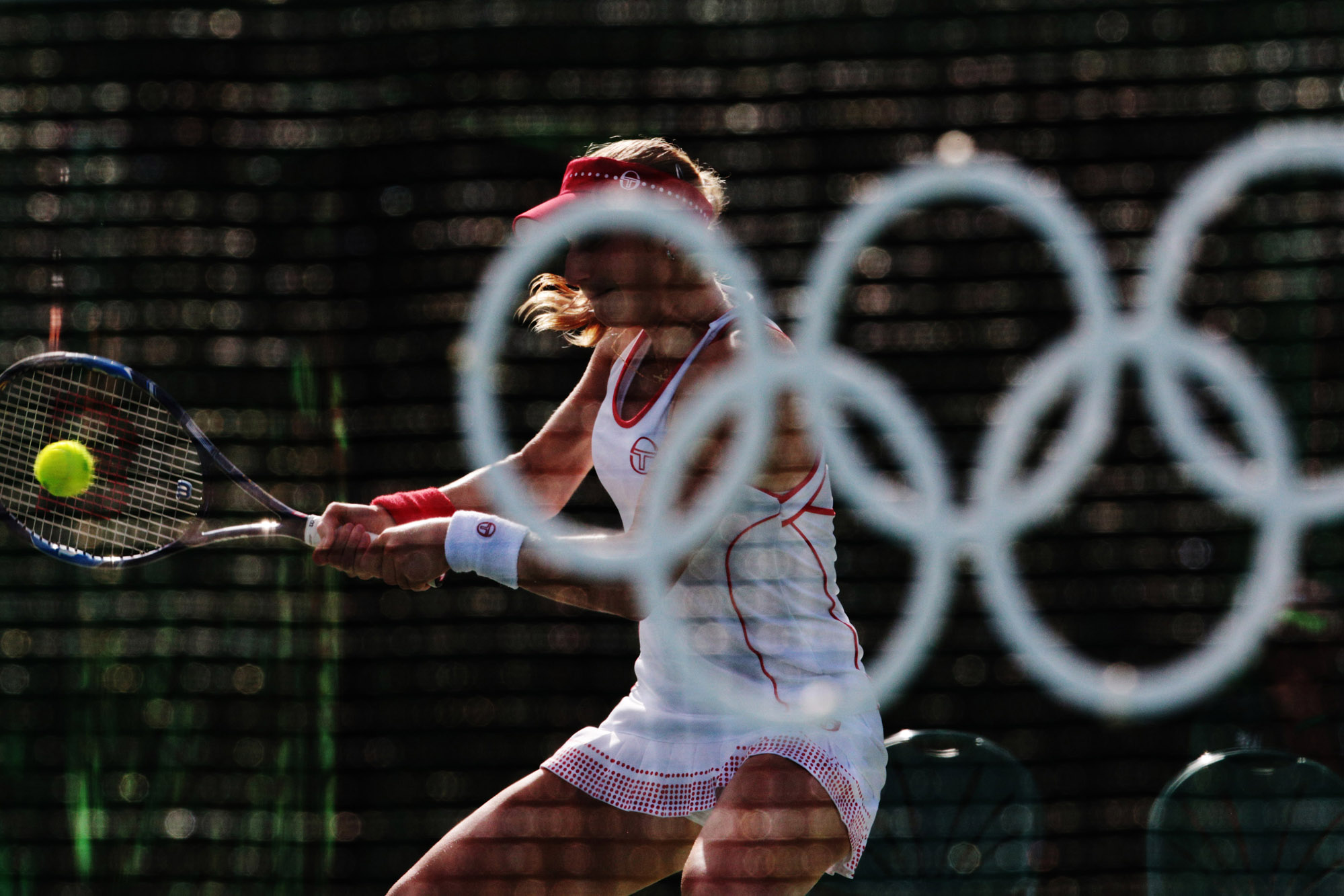
Archery, women. To make both the arms of the women and the Olympic rings sharp, I had to reduce the diaphragm to 45 and shorten exposure, by raising ISO to 12,800.
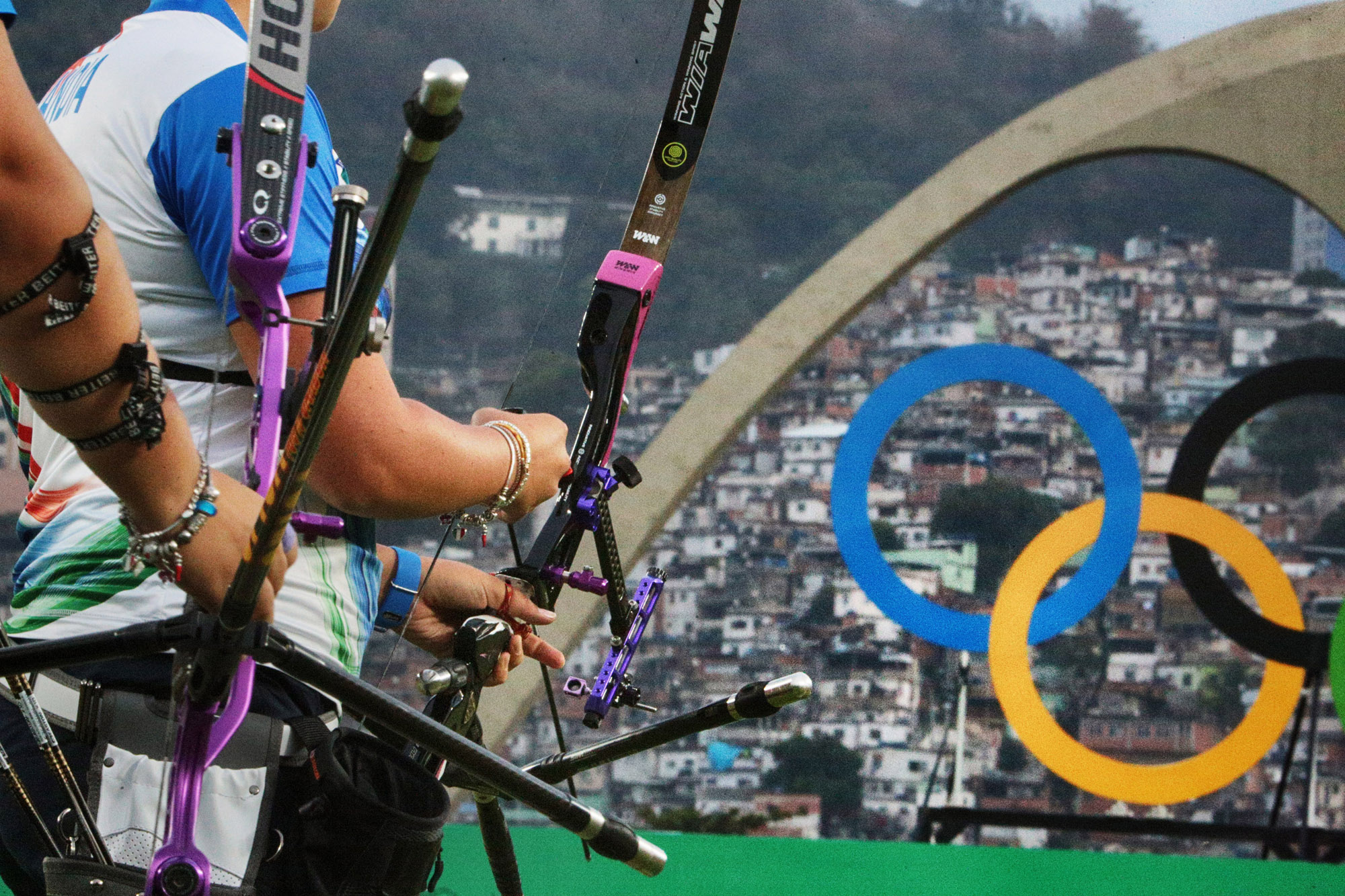
Blurry pictures is photographer’s favorite artistic means when they are bored and have nothing to shoot. It sometimes does wonders.
Details can also help a sports photographer. If you catch a right angle, they will look very powerful.
Many athletes tattoo Olympic rings on themselves. It is impossible not to notice them — they make simple, but memorable photographs. The only thing you need to do is get a telephoto lens (from 500mm) and observe.
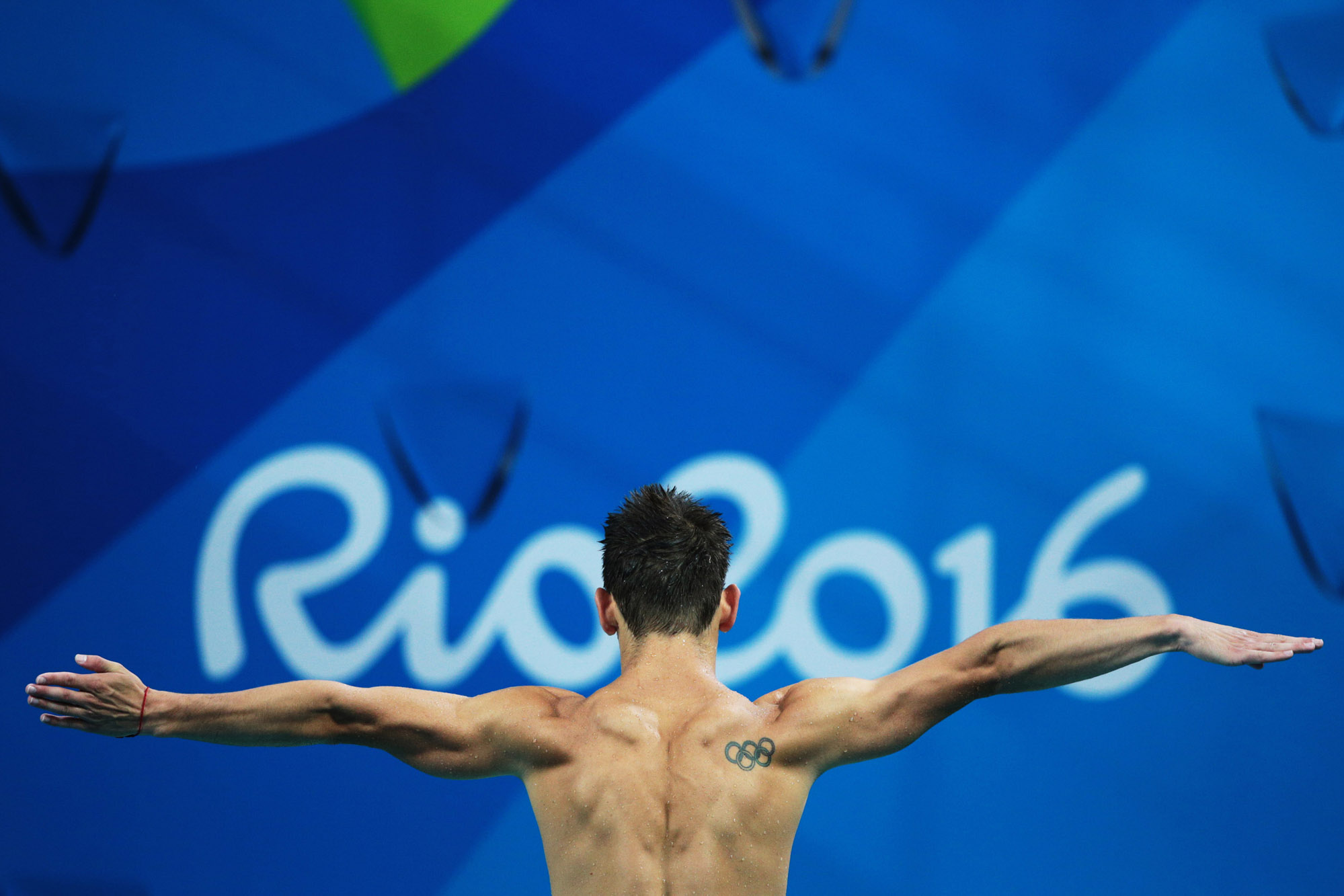
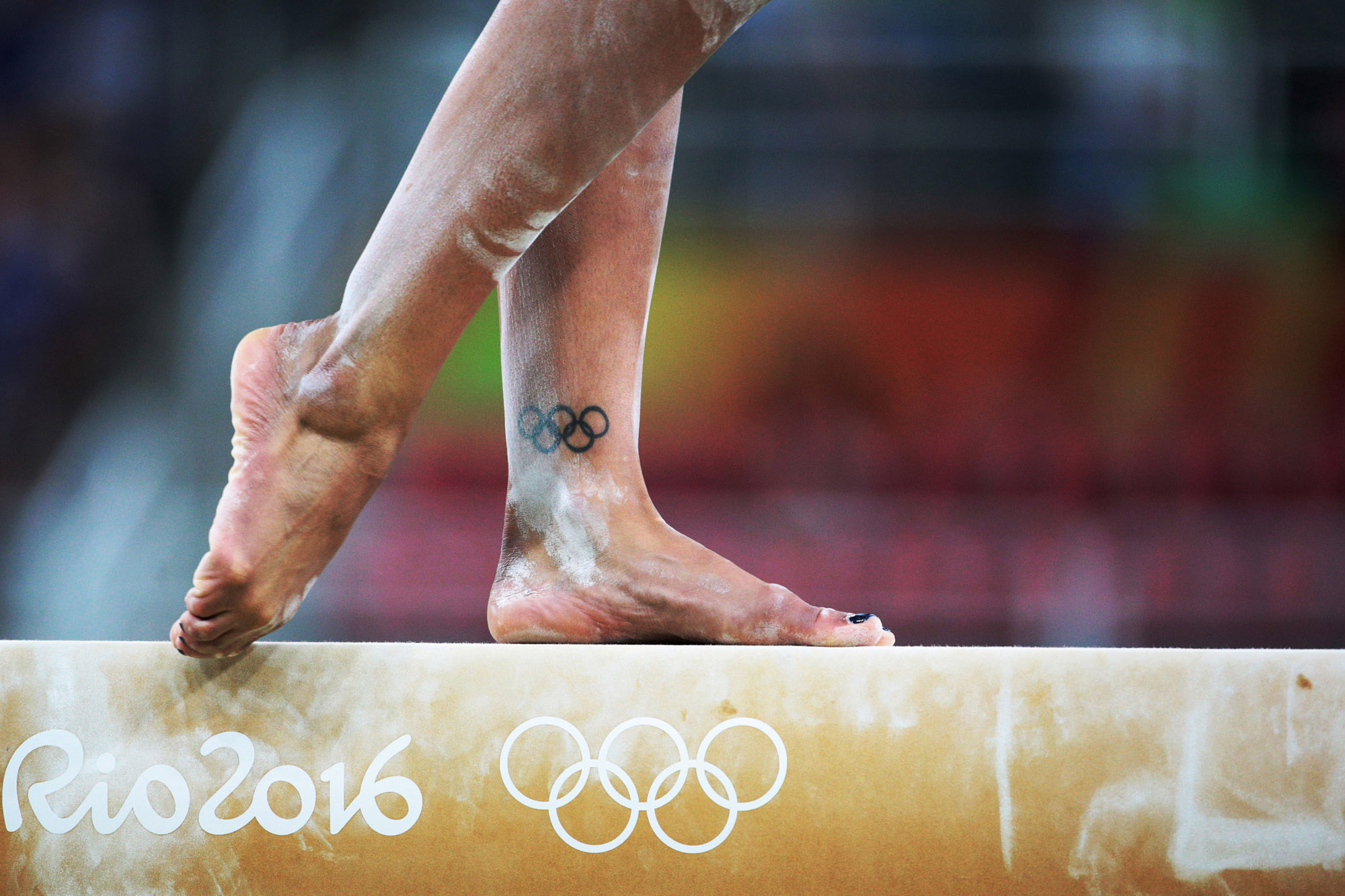
Long shots. All easy here, you only need to find beauty.
And sometimes, miracles happen.
For instance, you find Bolt’s golden track shoes right next to you. You only need to lie under them, and you have a picture. I have a more clear picture without the golden iPhone, too — but I think it is the iPhone that makes the color of the shoes look particularly charming.
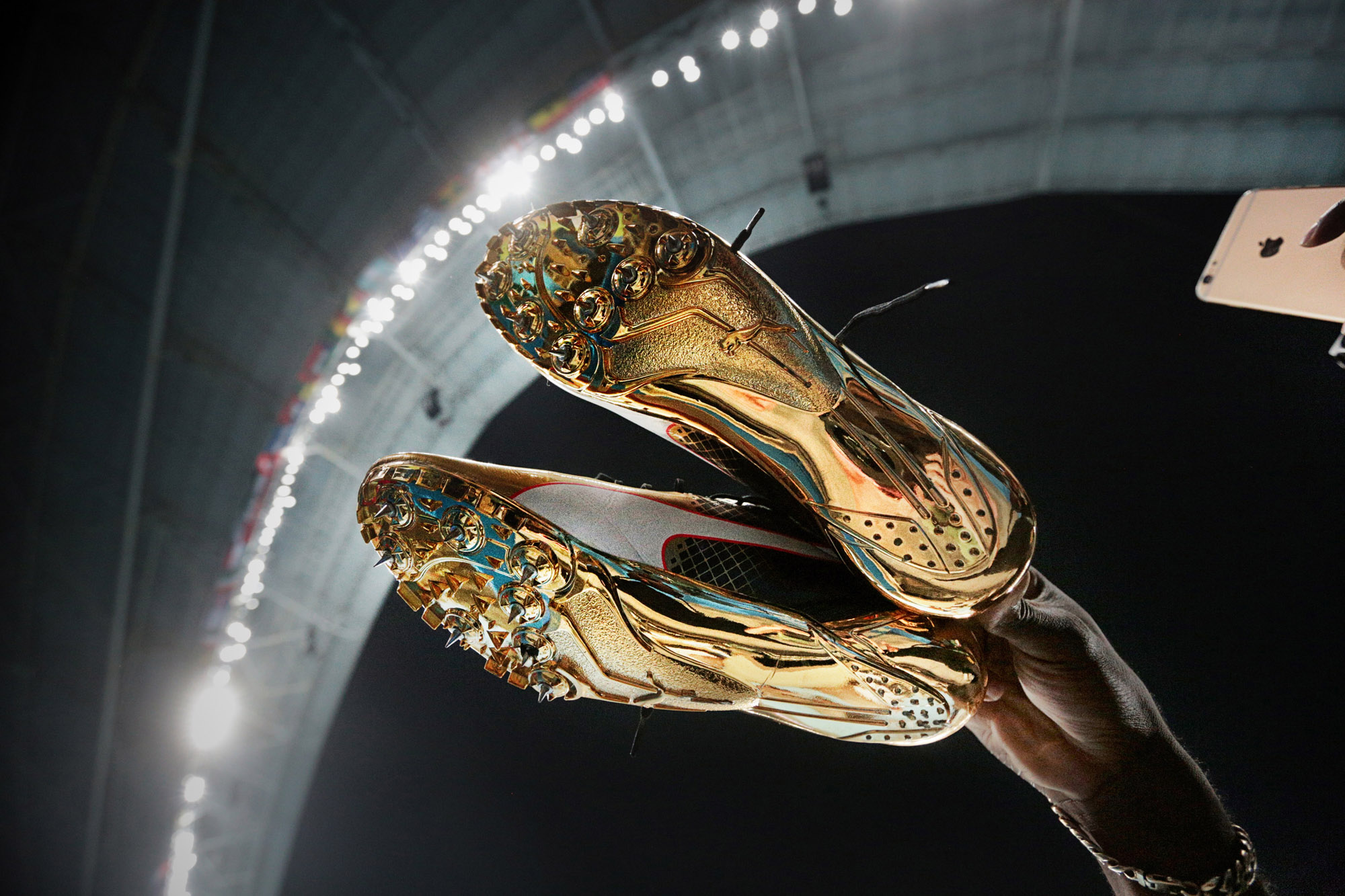
Or Michael Phelps, after winning his fourth gold, at first ignores a group of photographers who are waiting for him for a shoot, but then stops in front of the platform on the other side of the pool. Shooting from the back has its perks.
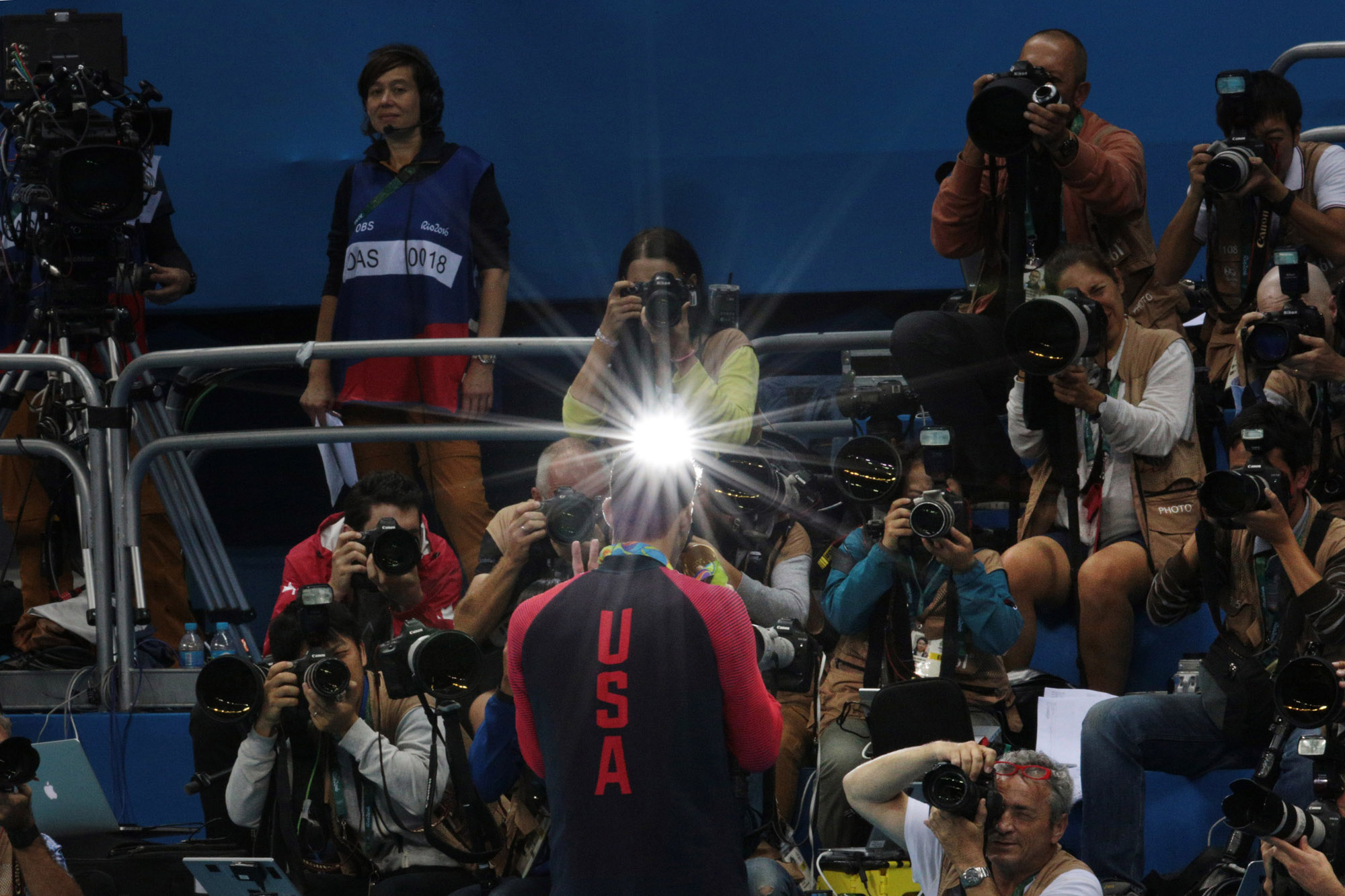
But my favorite thing to capture in sports photography is emotions. If I could, I would only capture them.
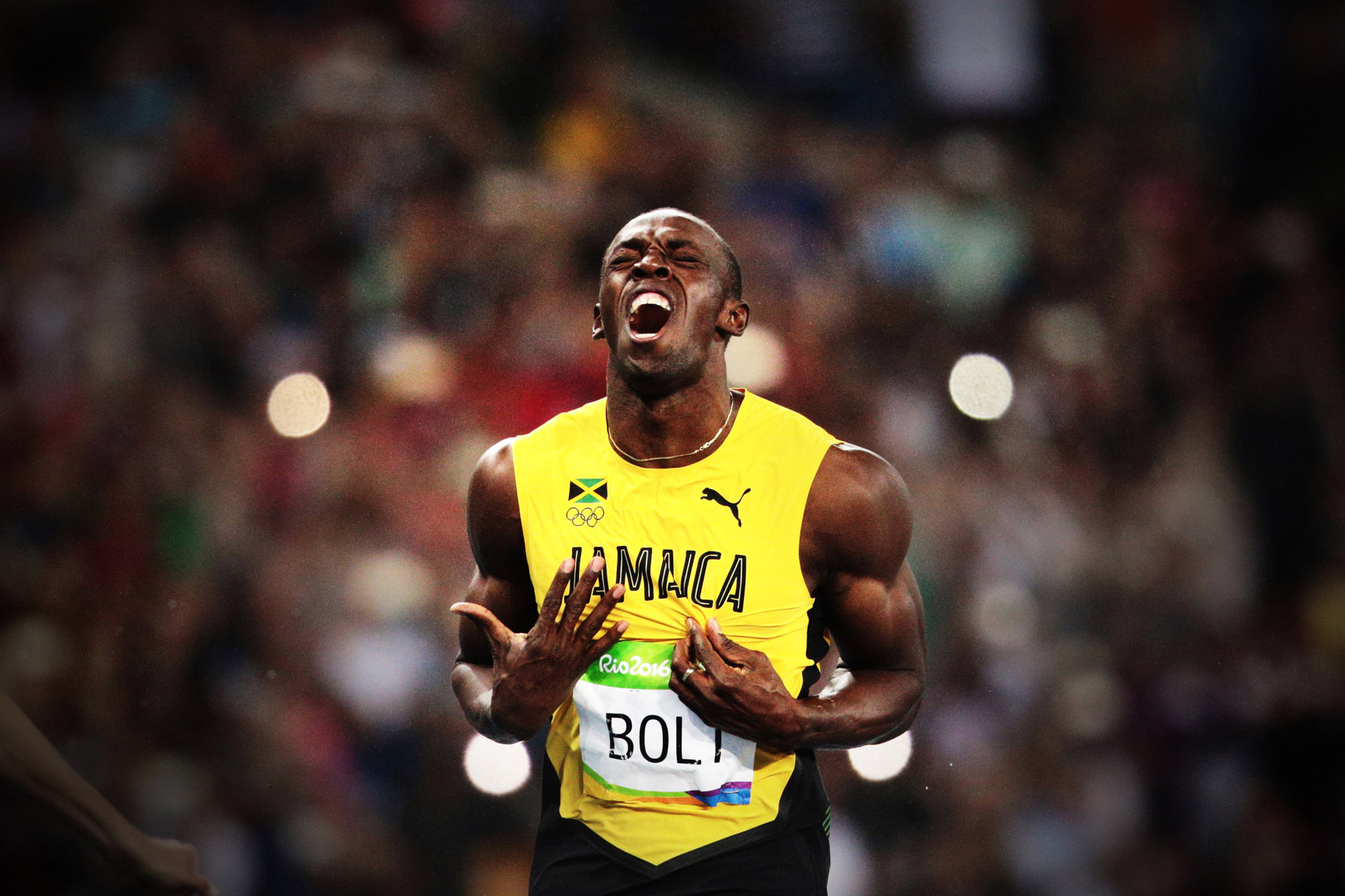
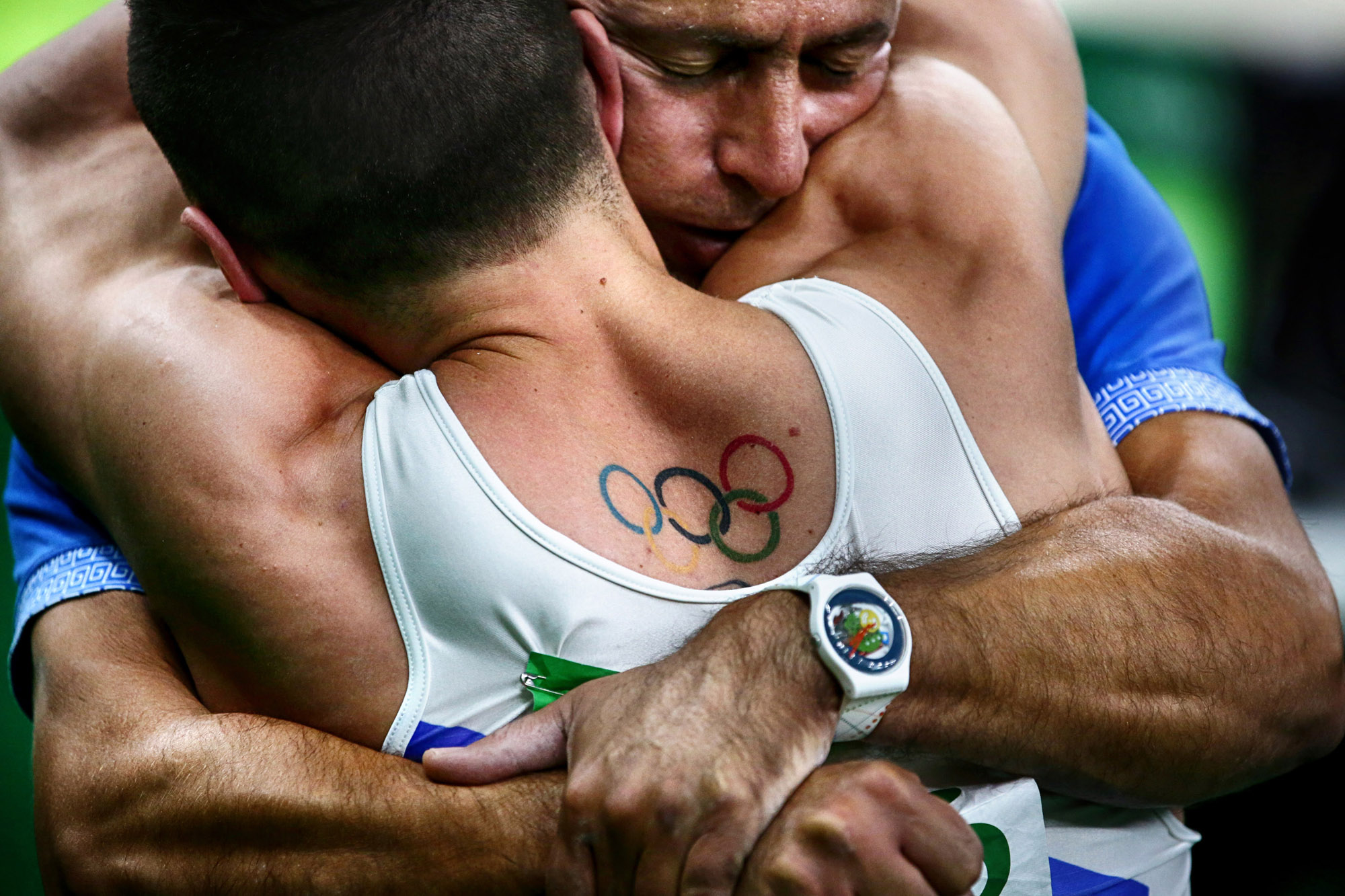
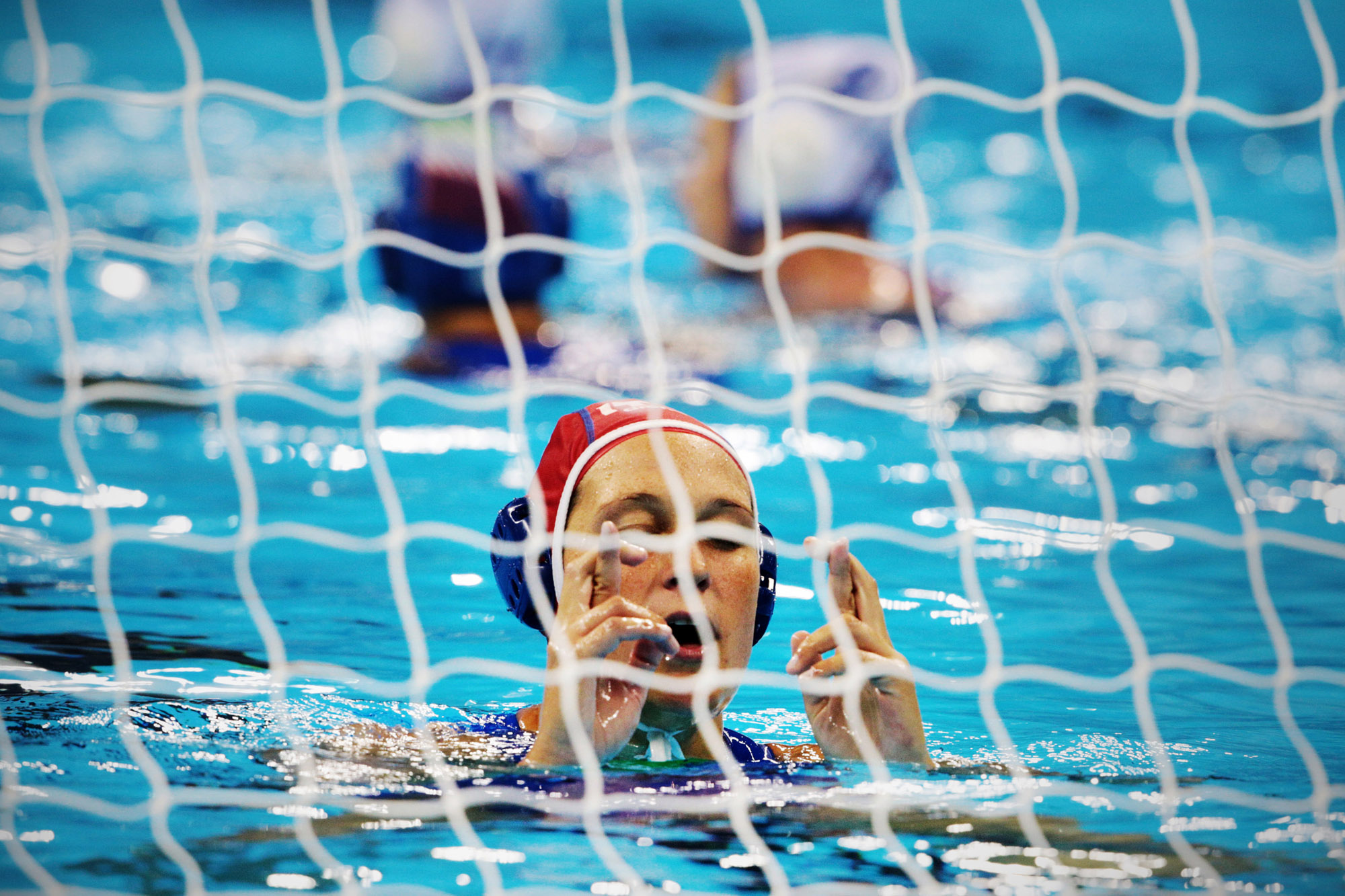
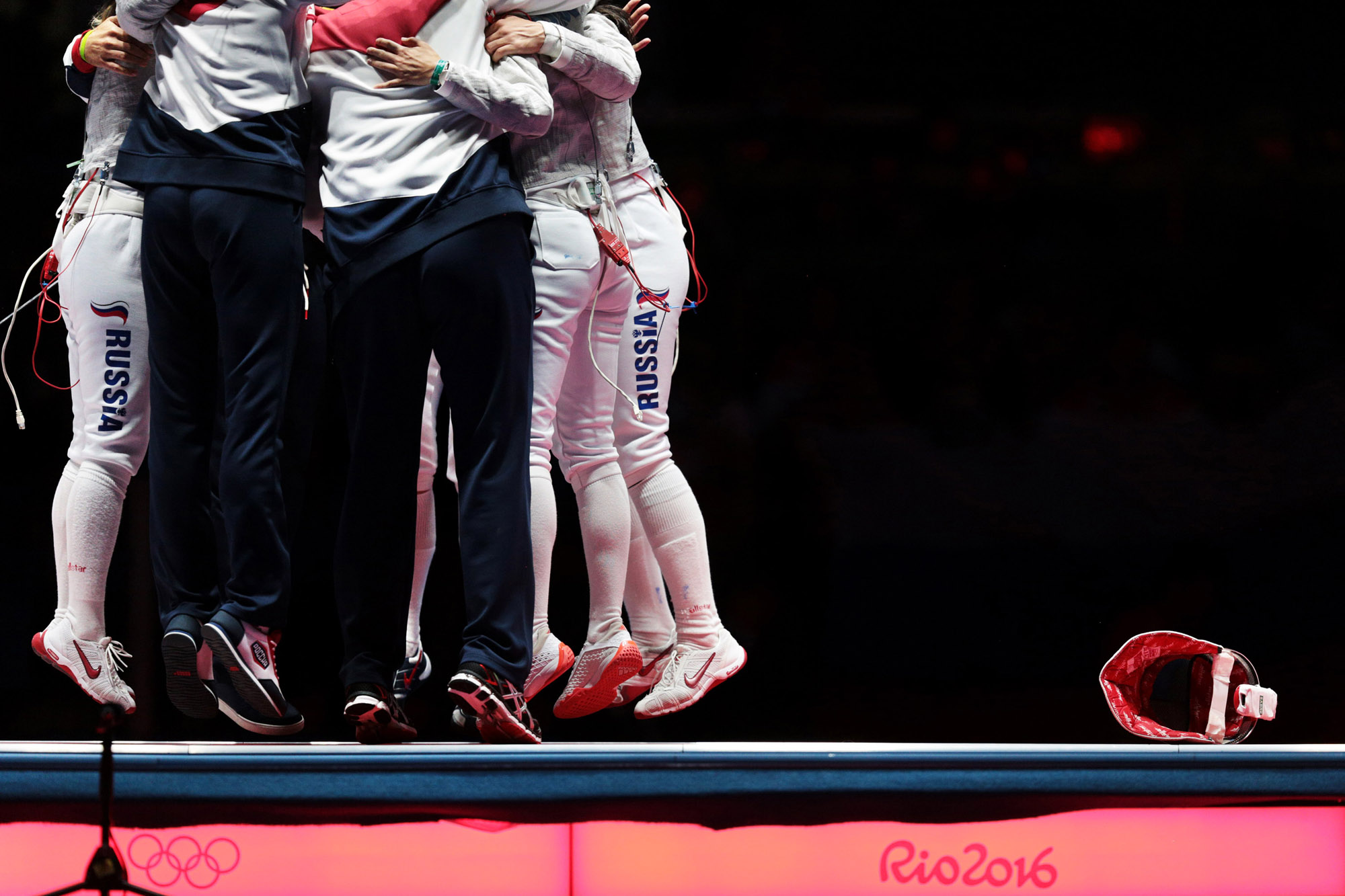
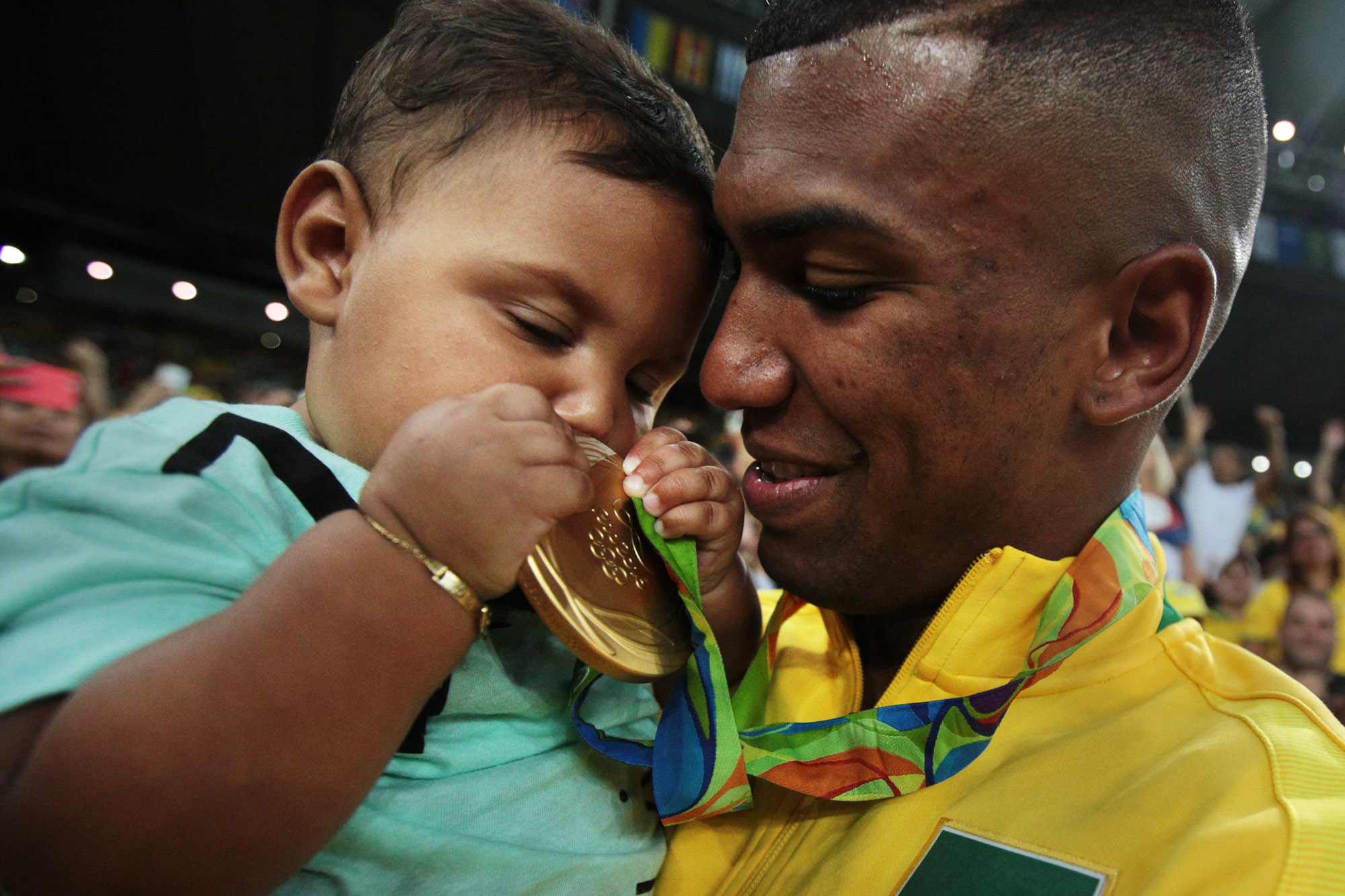
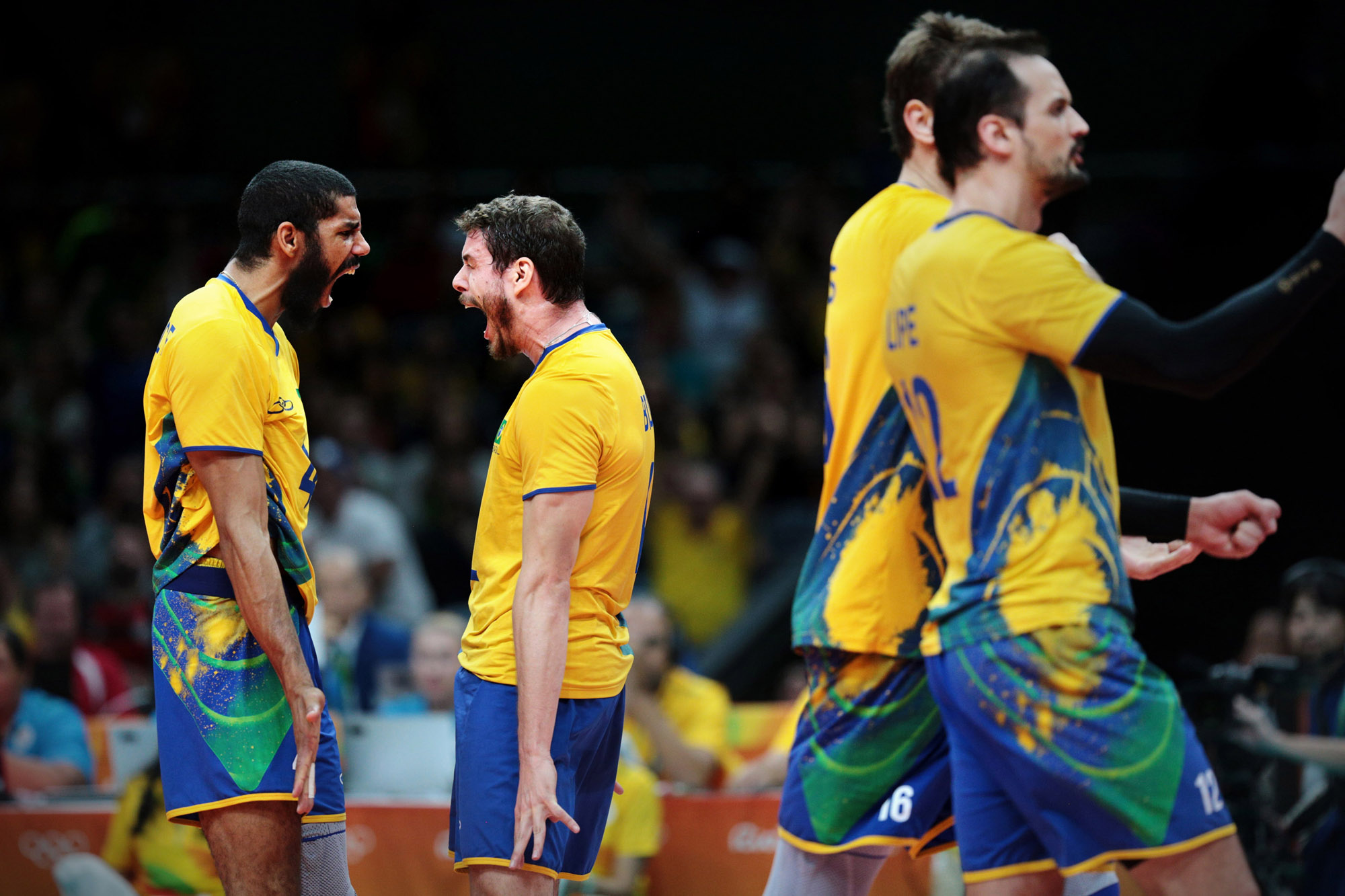
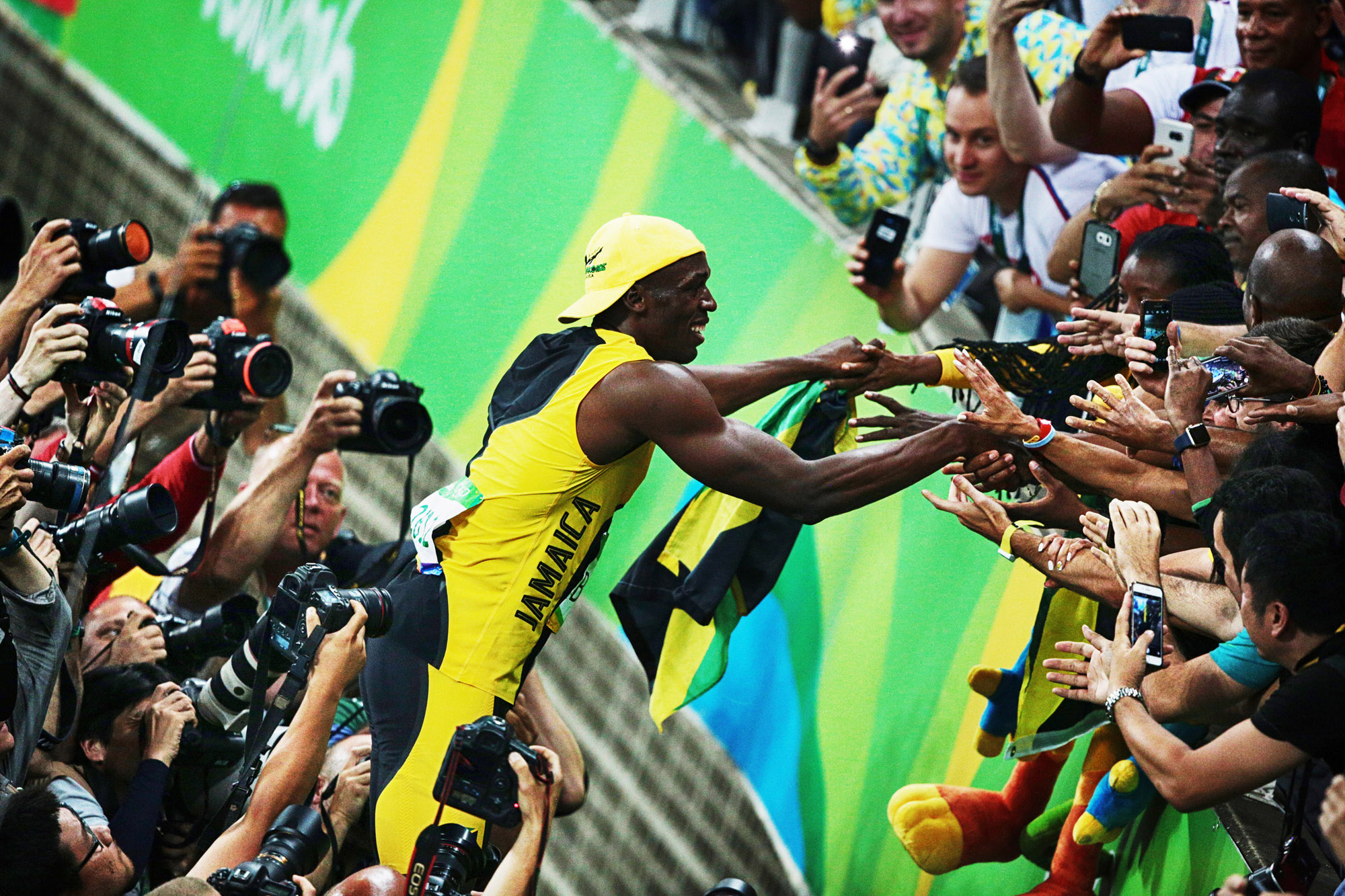
New and best
